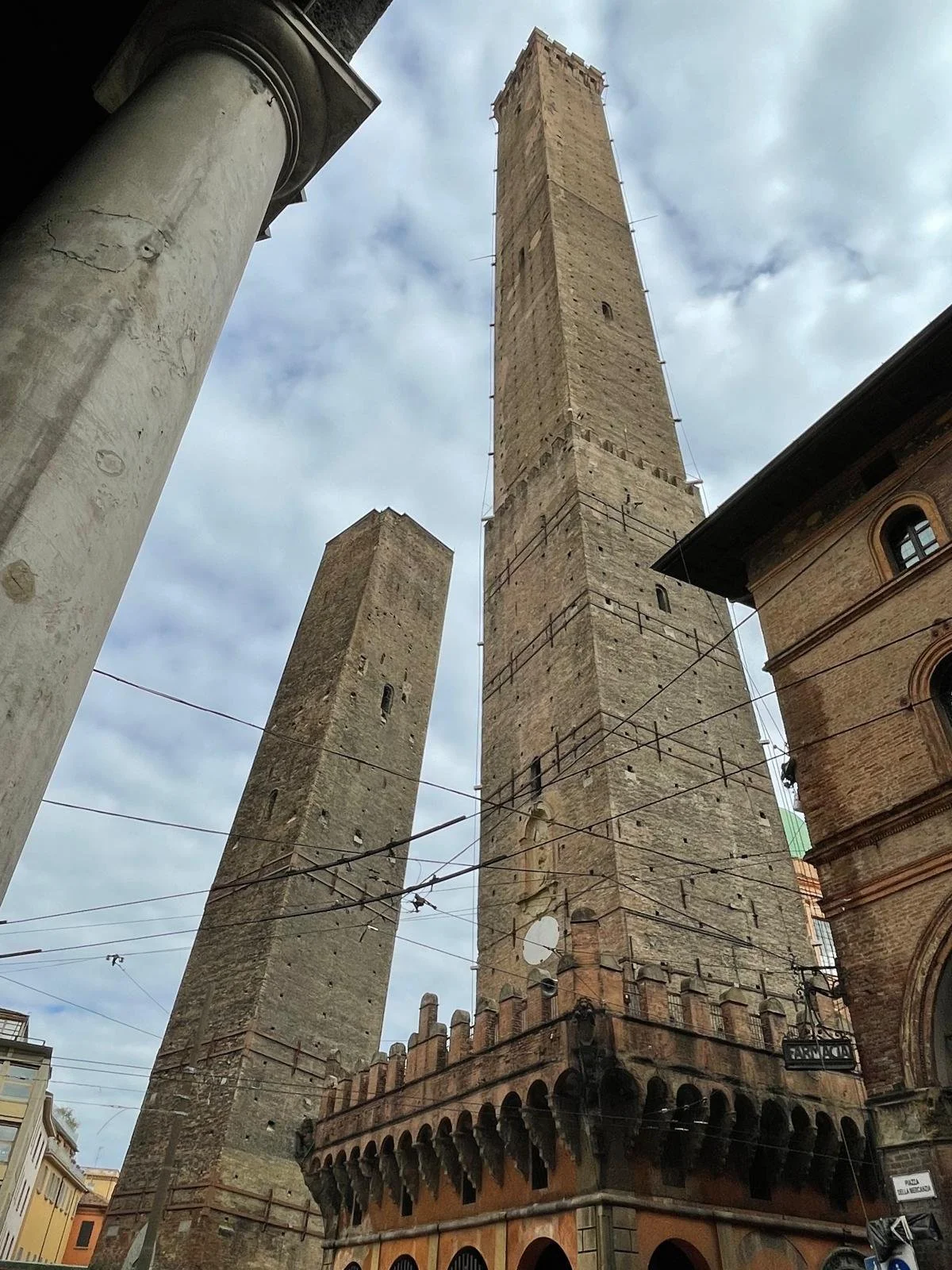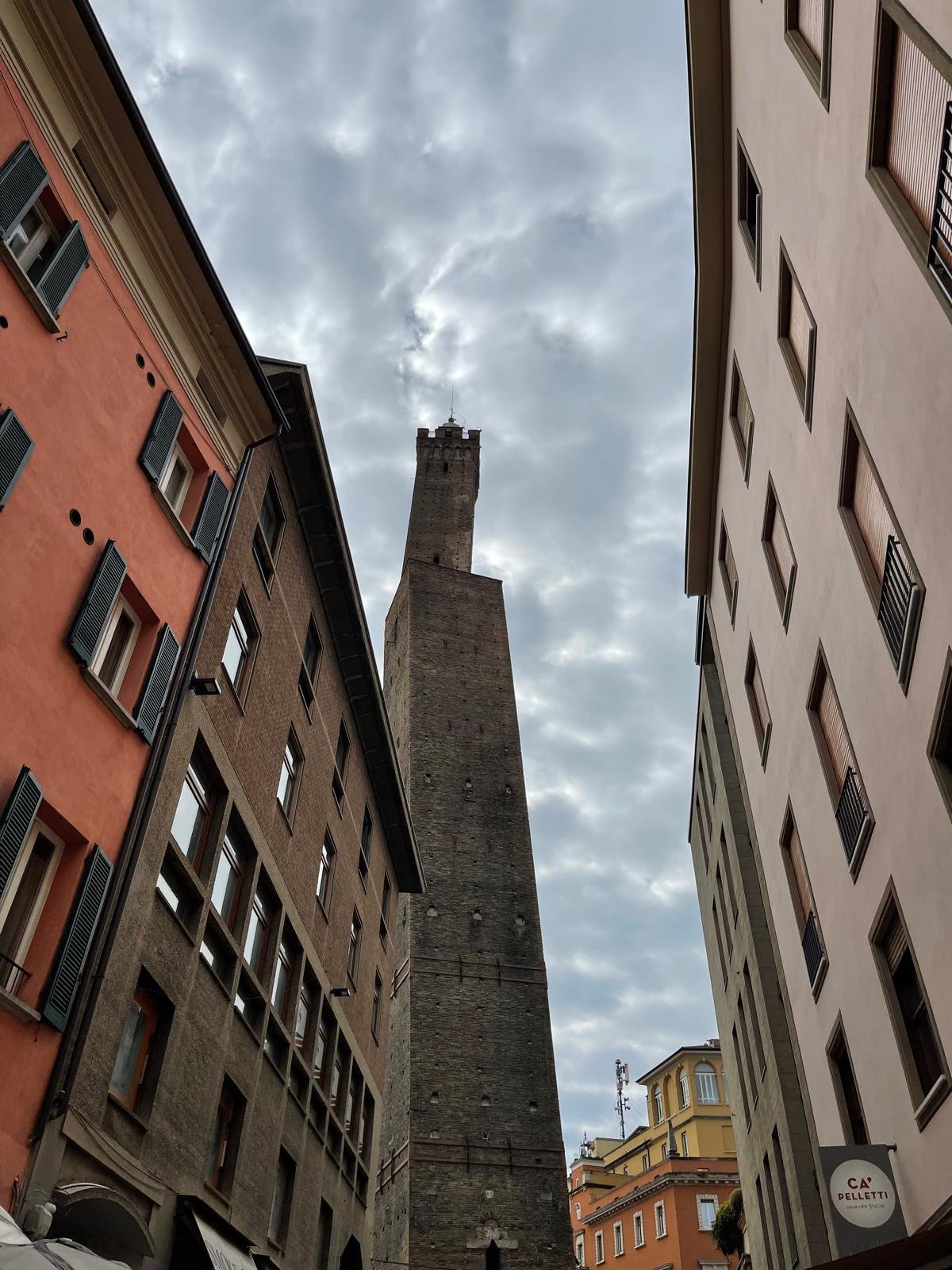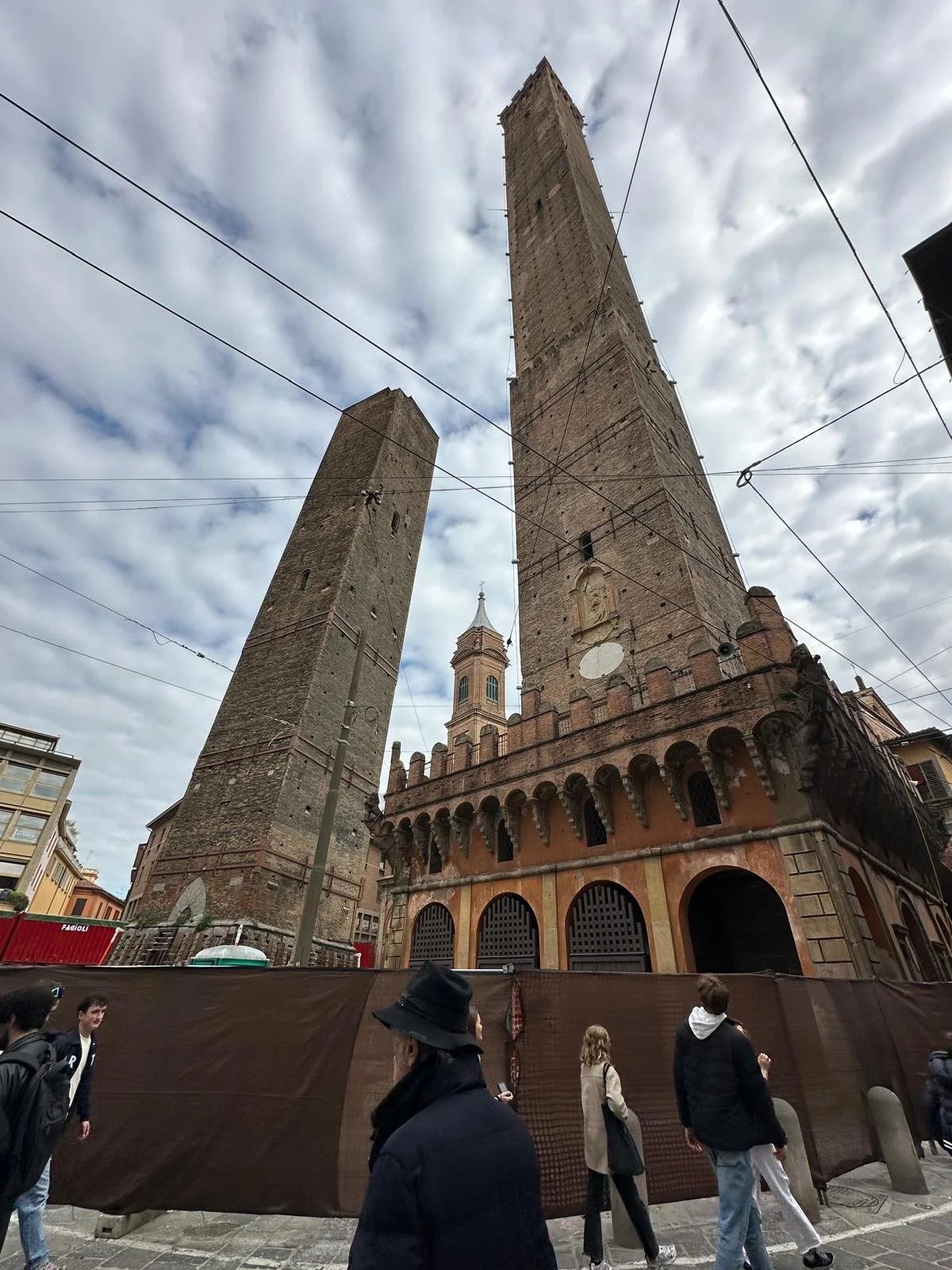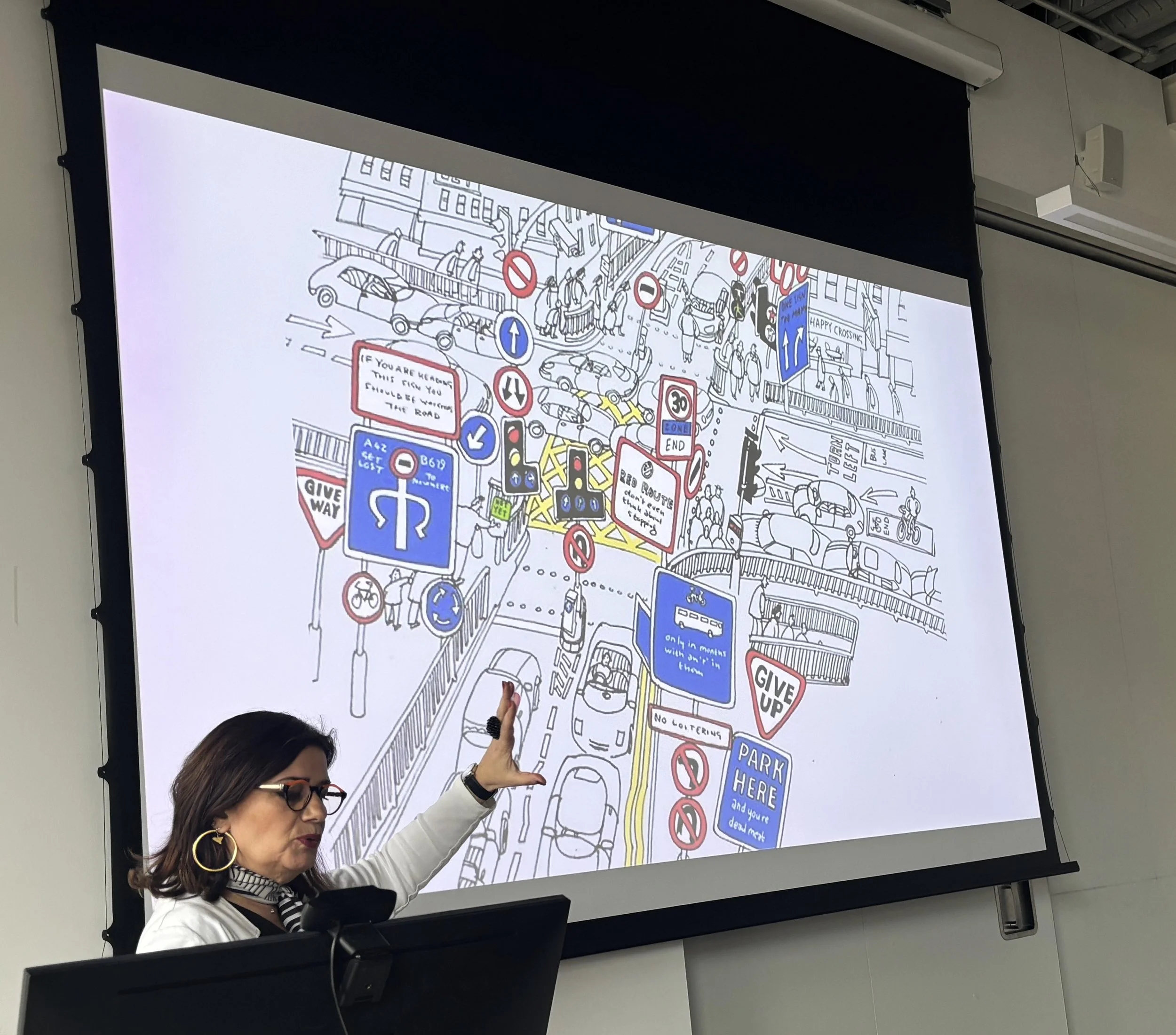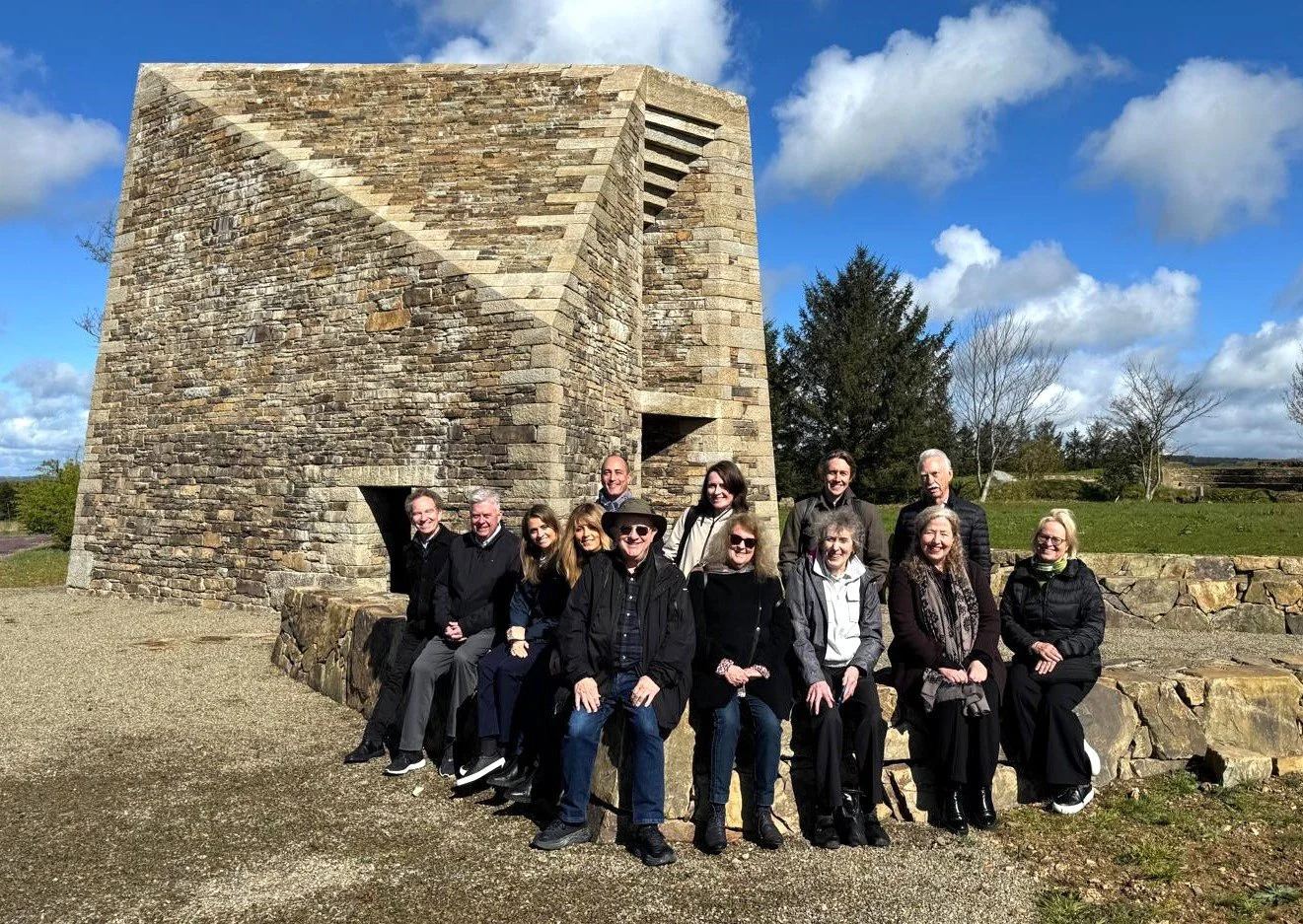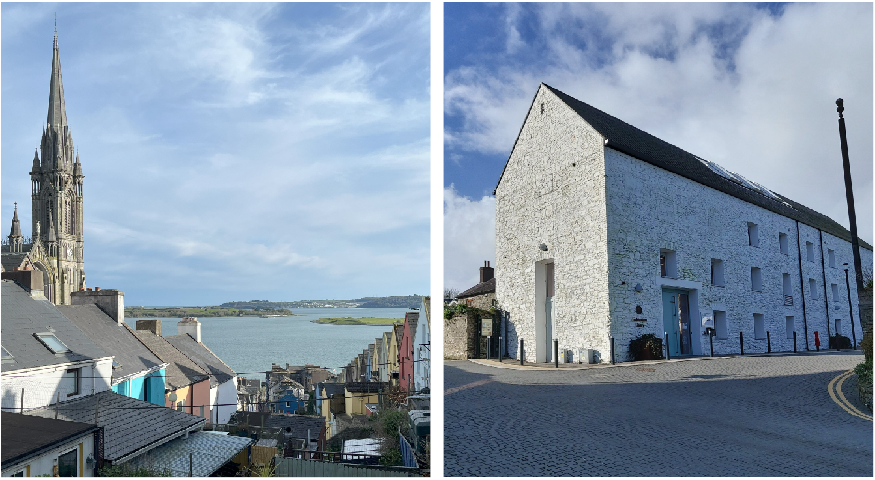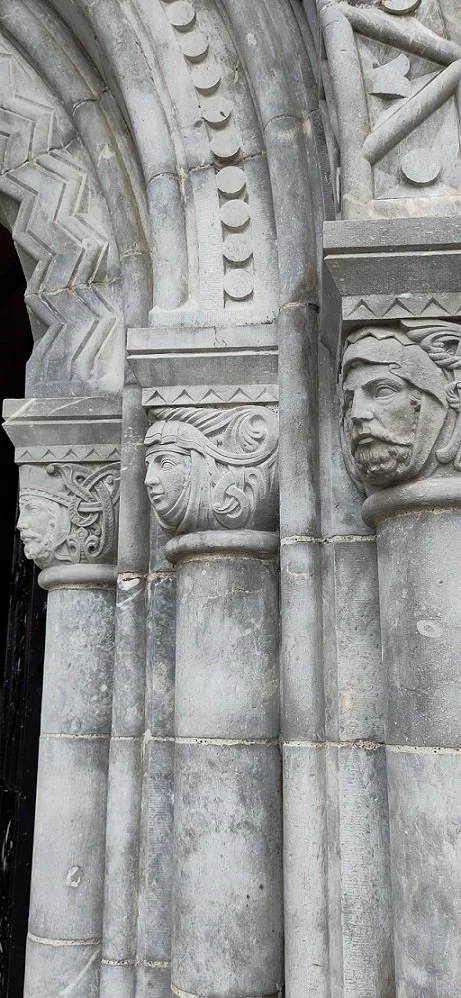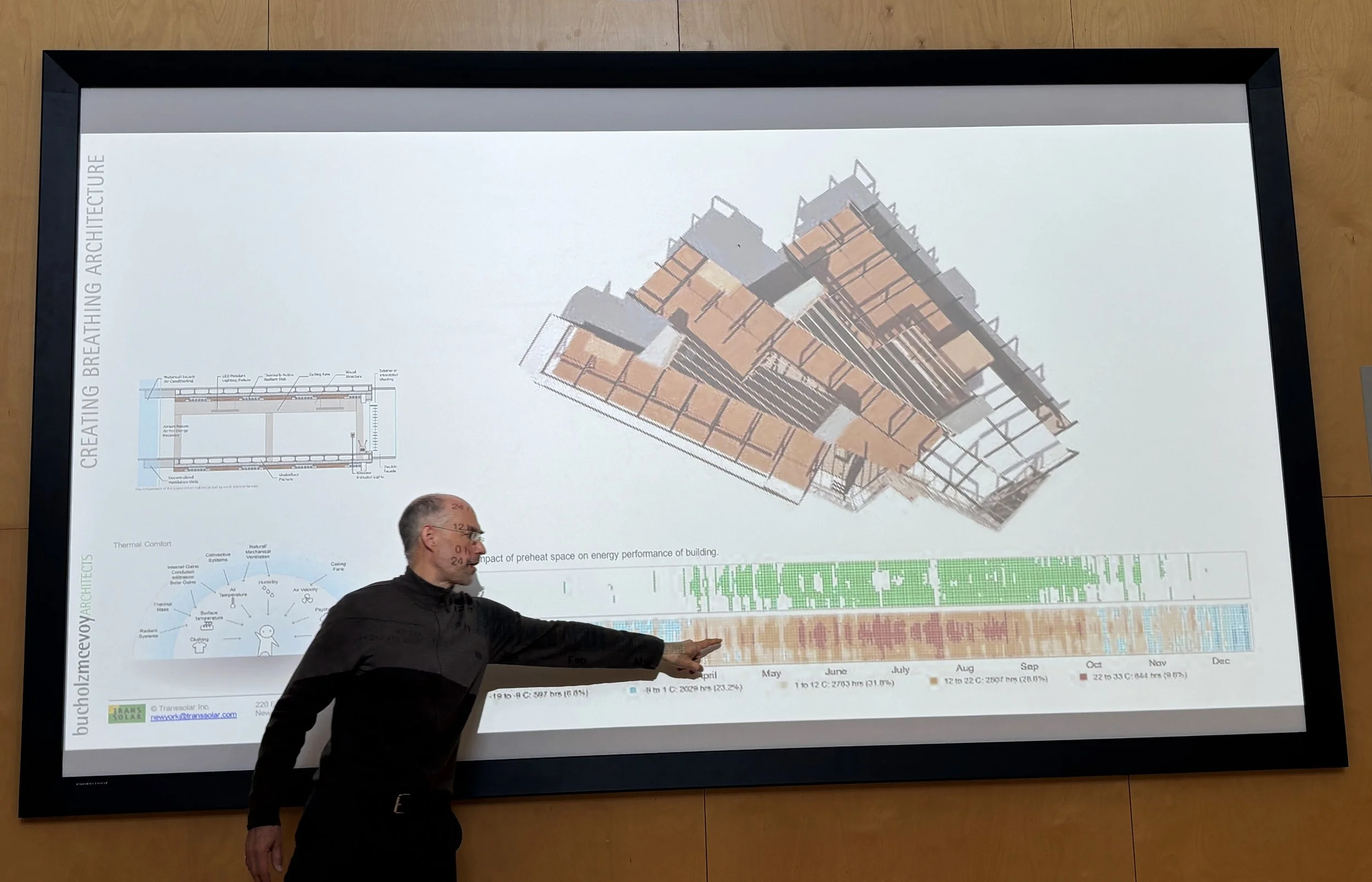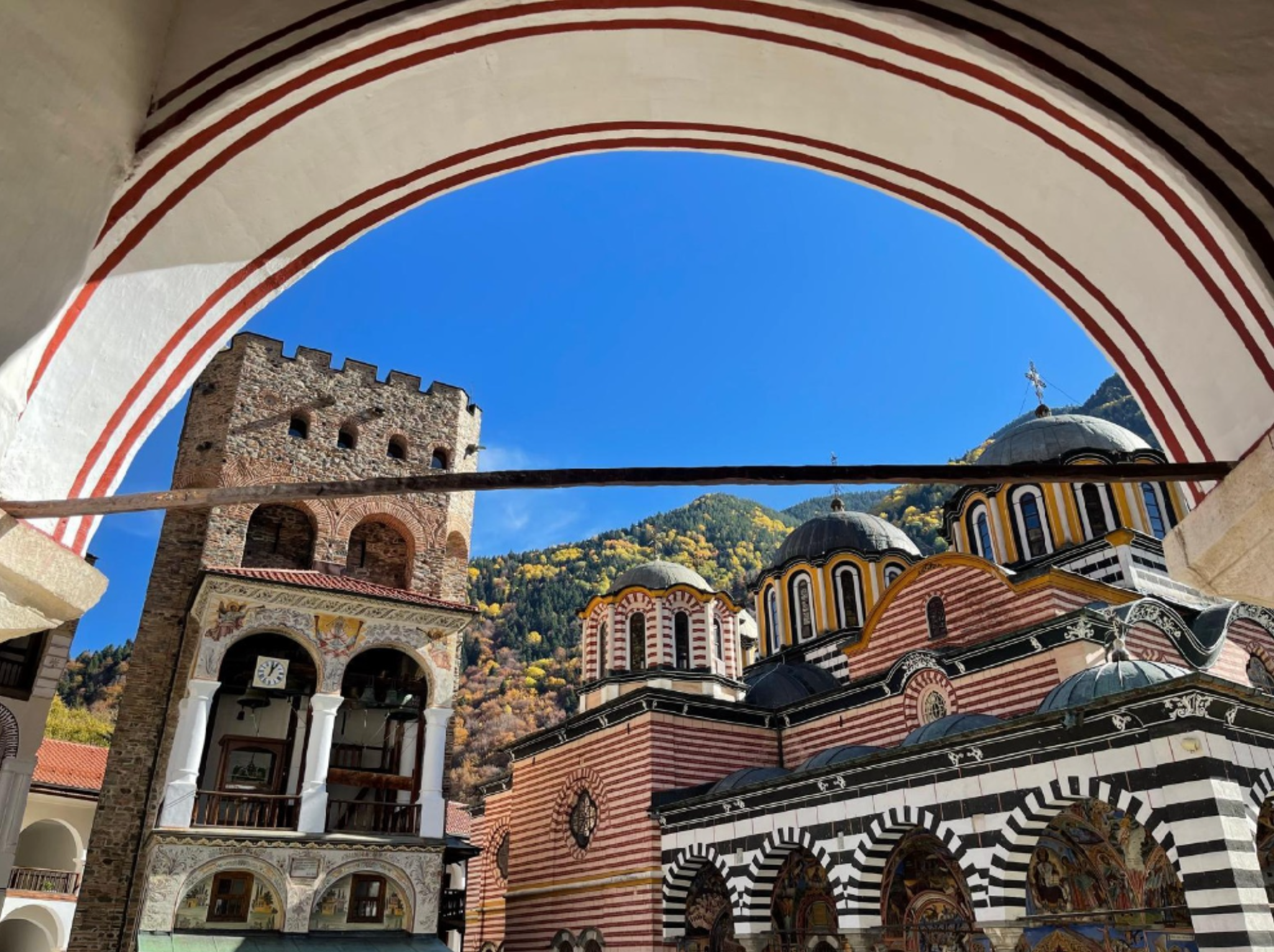AIA Continental Europe & AIA United Kingdom Conference / Cork, Ireland – ‘Genius Loci’ – Part III
The circular square at the Munster Technological University left a vivid, lasting, impression. Photo Credit: G Meagher AIA
Day 3 & 4: Site Visits / Further Talks and Extension Day
After Saturday’s convivial dinner, the attendees regrouped on Sunday morning for a bus trip to the Bishopstown Campus of Munster Technological University (MTU) before returning to CCAE for the final afternoon session.
Shane de Blacam, Founder & Director de Blacam and Meagher Architects
Those few attendees who were not familiar with de Blacam’s work did not anticipate grand architecture from a small technical college in Cork’s suburban outskirts. However, on entry, they found MTU’s training facilities, student areas and a library encircling a main ‘square’ that made an unexpectedly strong architectural statement.
With similar admiration, the Royal Academy on awarding de Blacam its 2003 Architecture Prize, described the MTU as ‘a brick colossus that elevates the former Institute of Technology … into a campus worthy of its new status as a Technical University’. Read more about the architect and the MTU campus HERE and HERE.
Although all attendees tried, no one photographer could fully capture the circular enclave or the absorbing interior spaces. MTU won the distinction of being the most photographed building of the Conference.
Photo Credits: H Kessler FAIA & RD Reber AIA
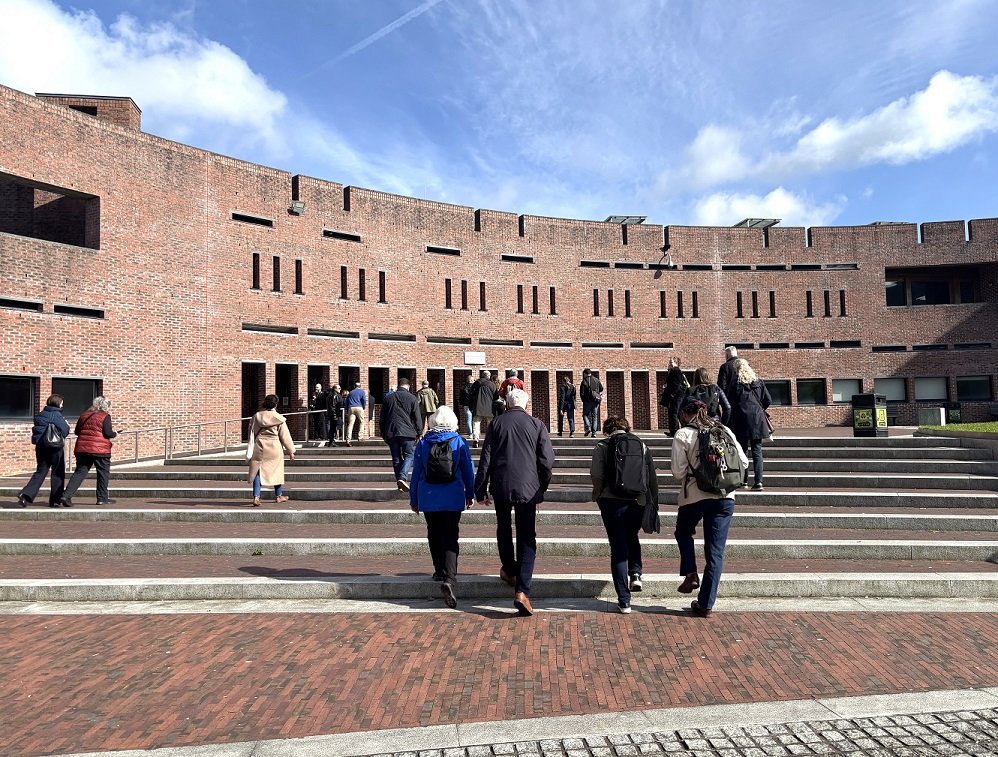


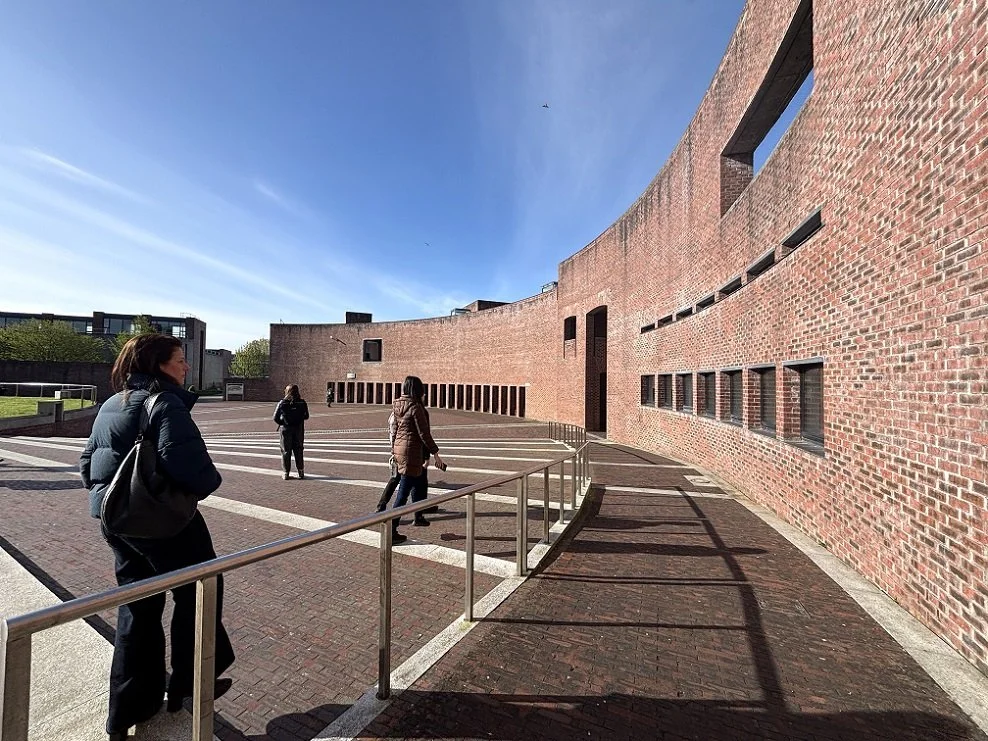



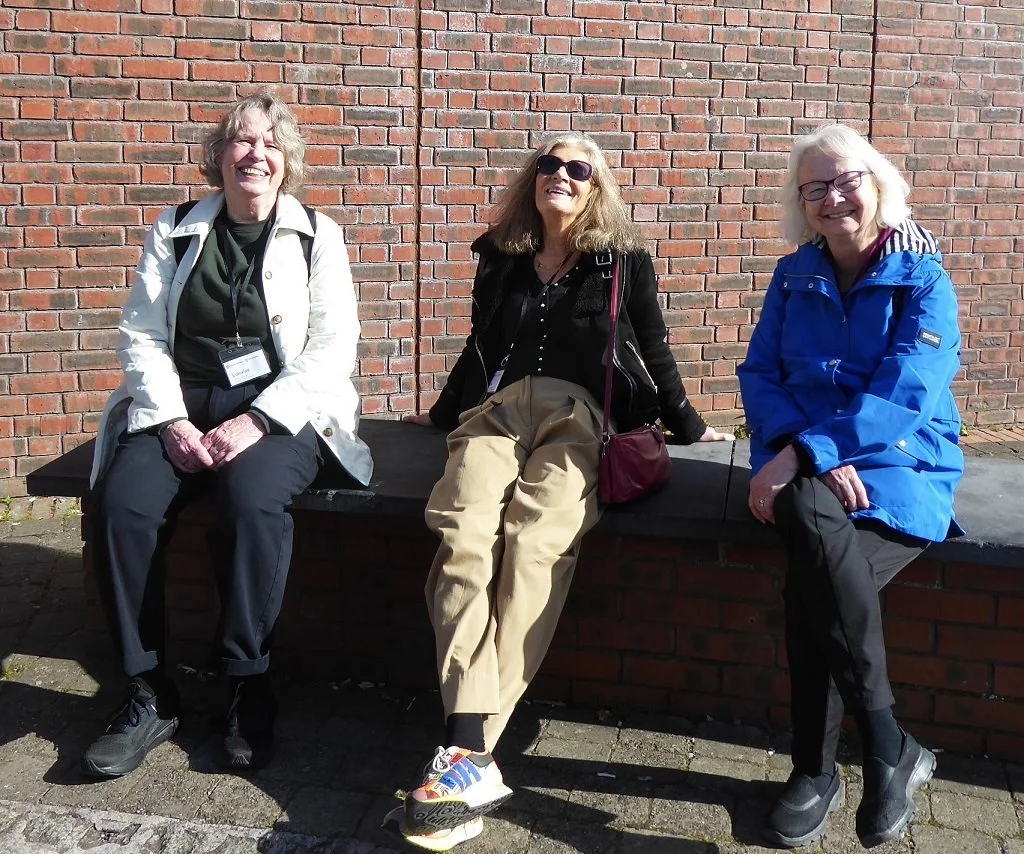
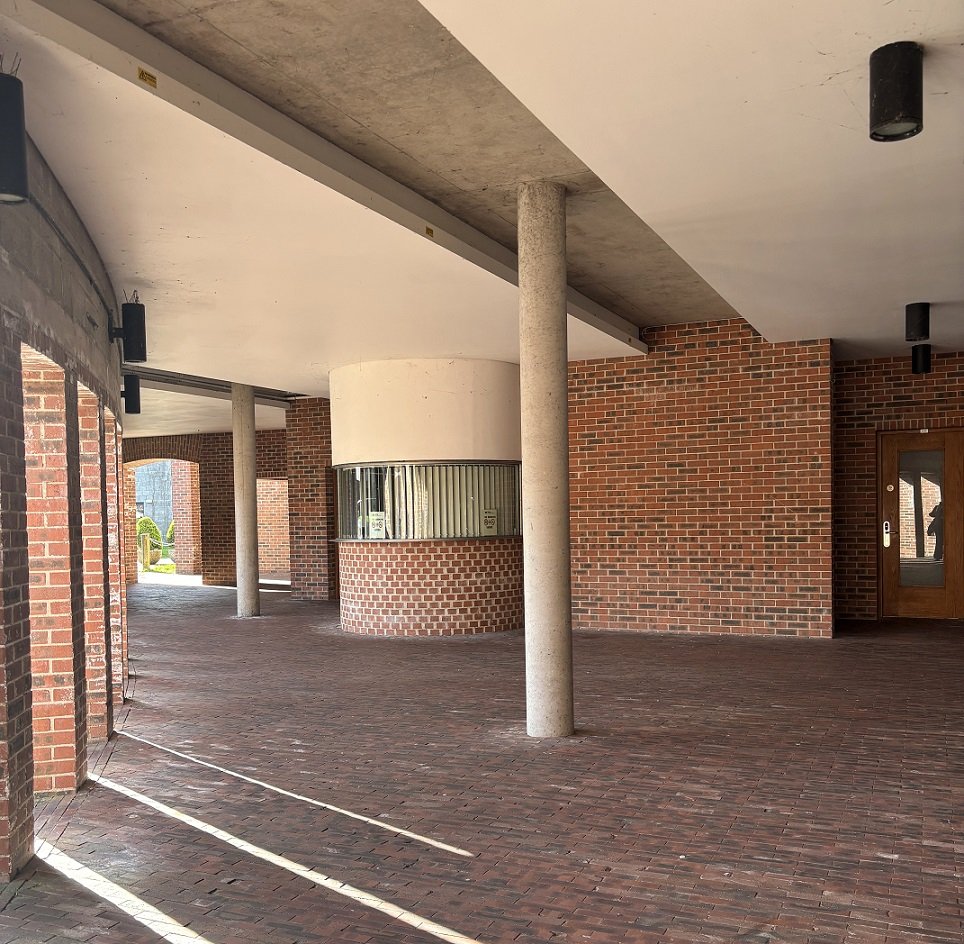

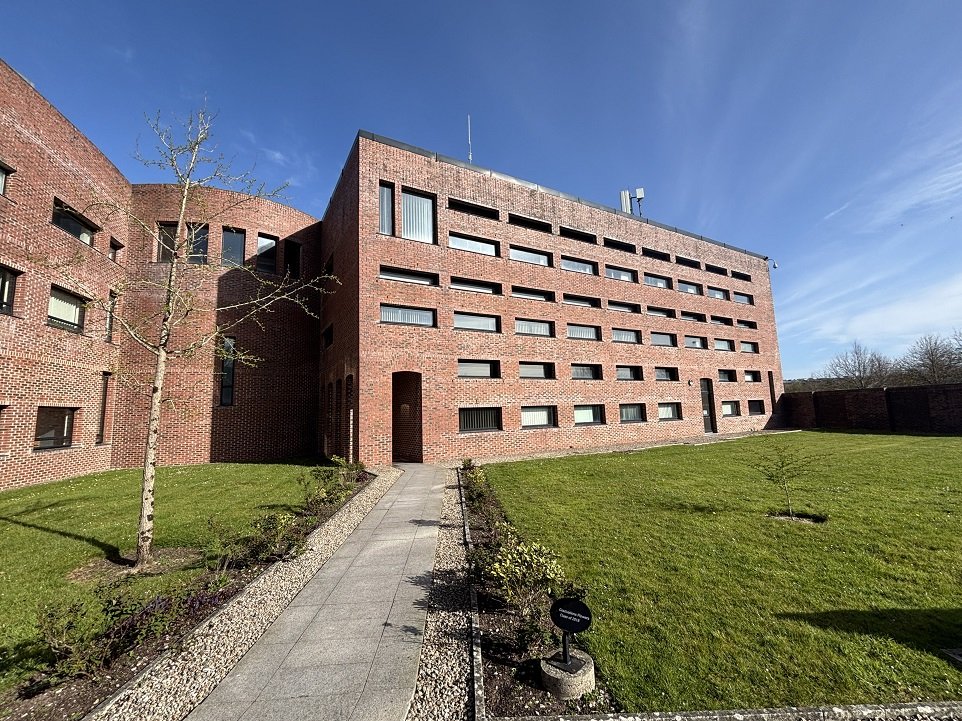


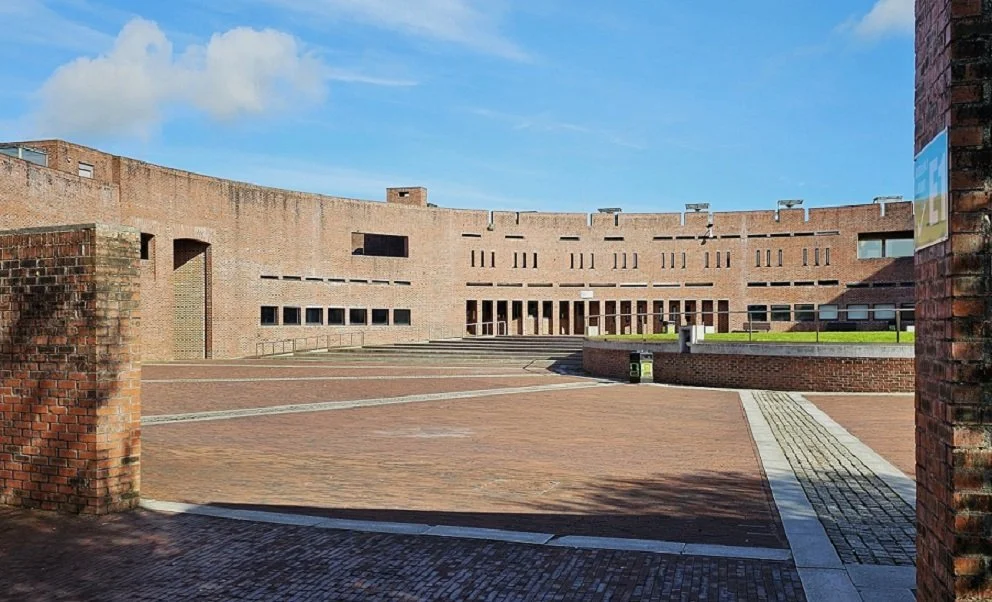

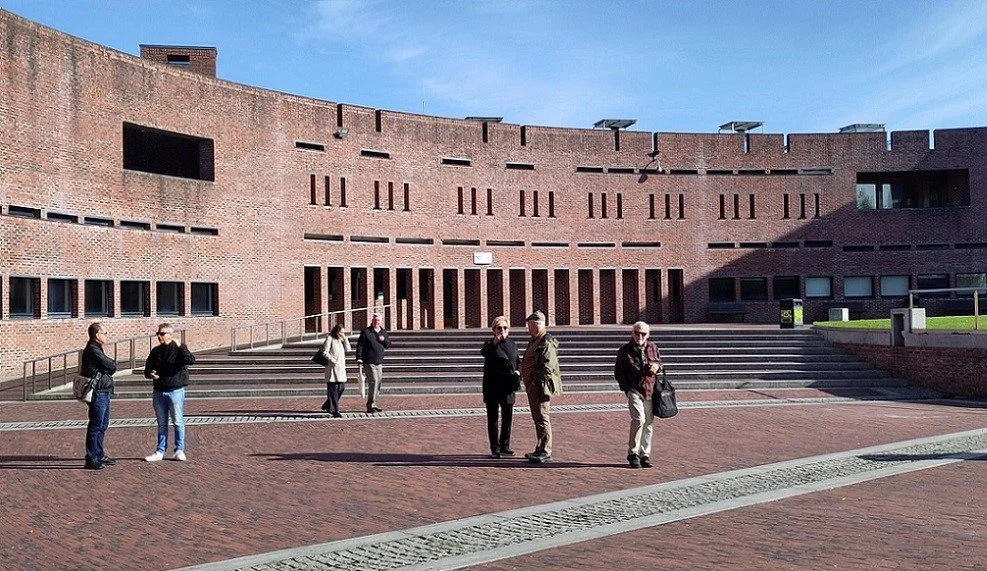
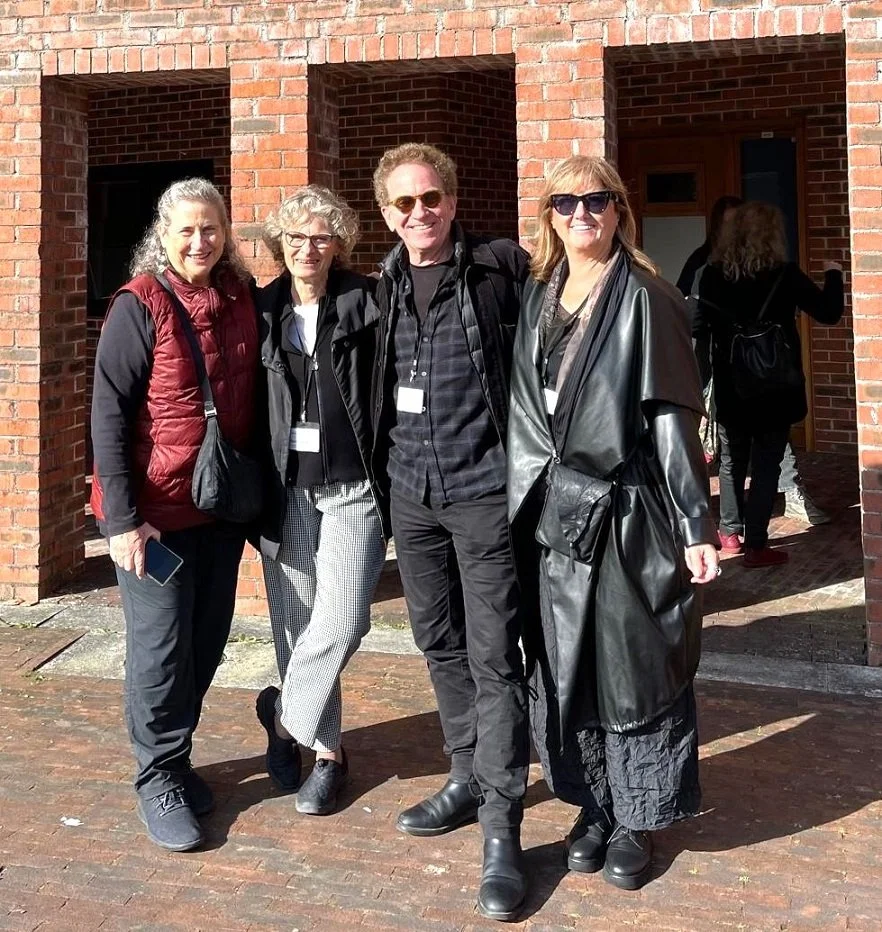

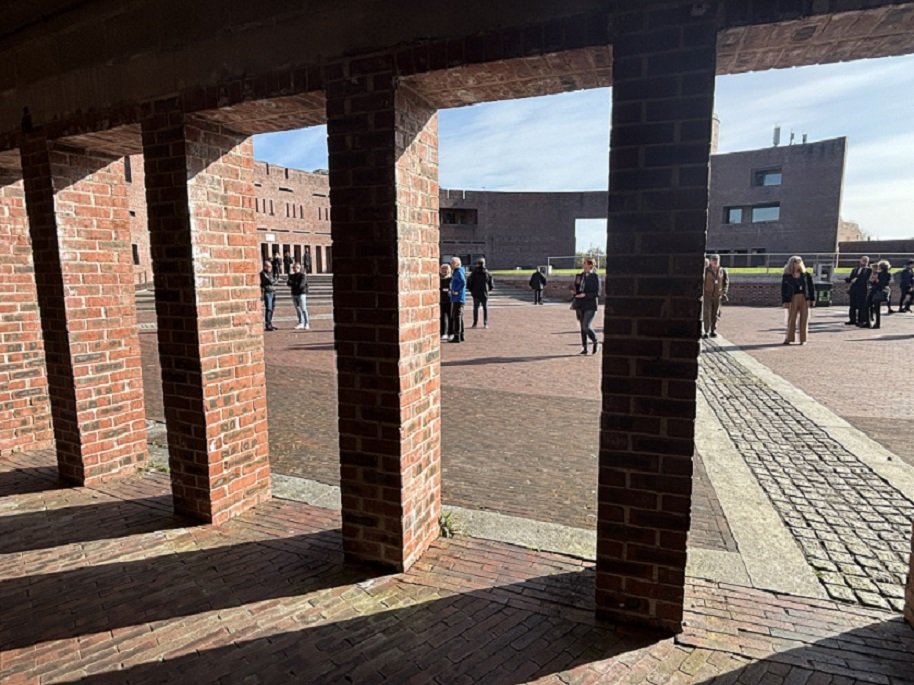




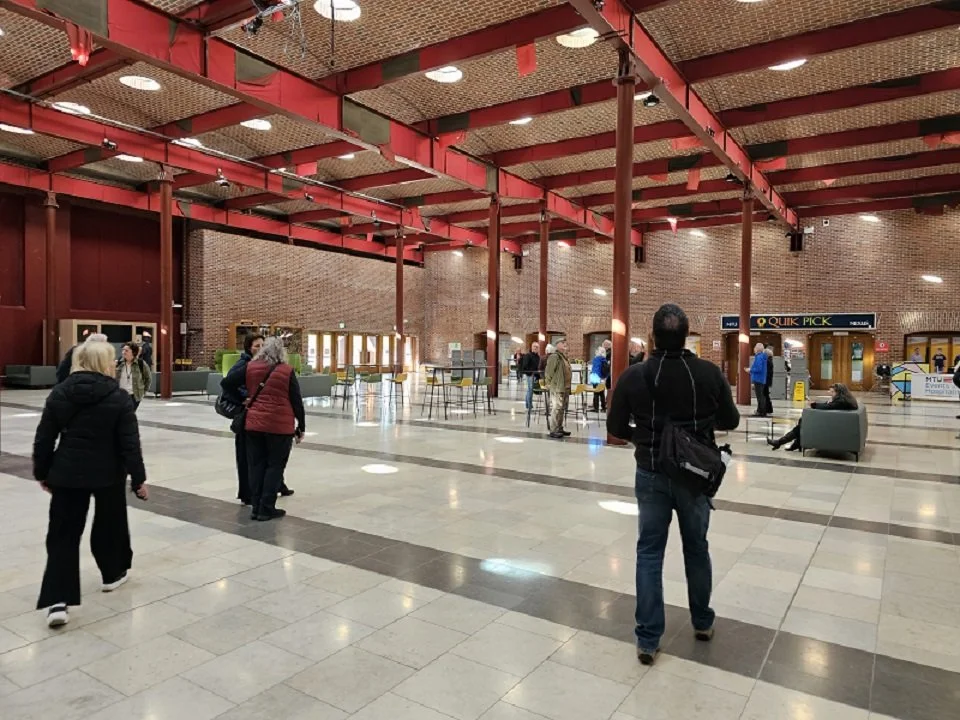


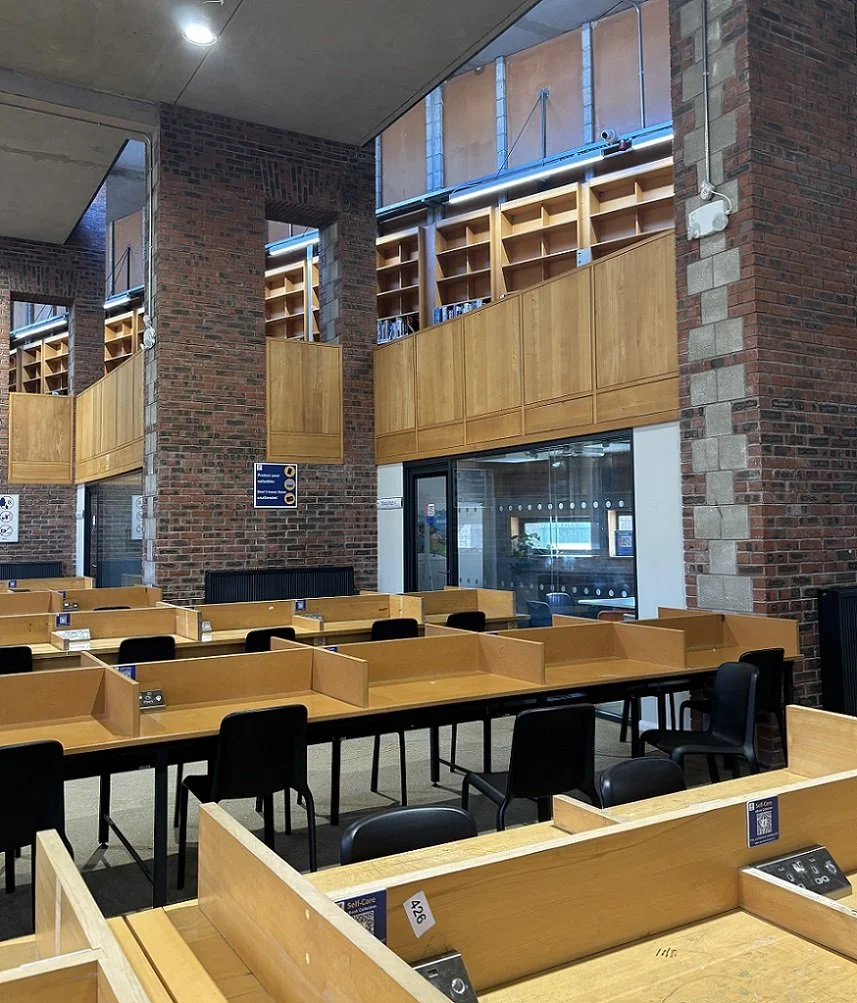
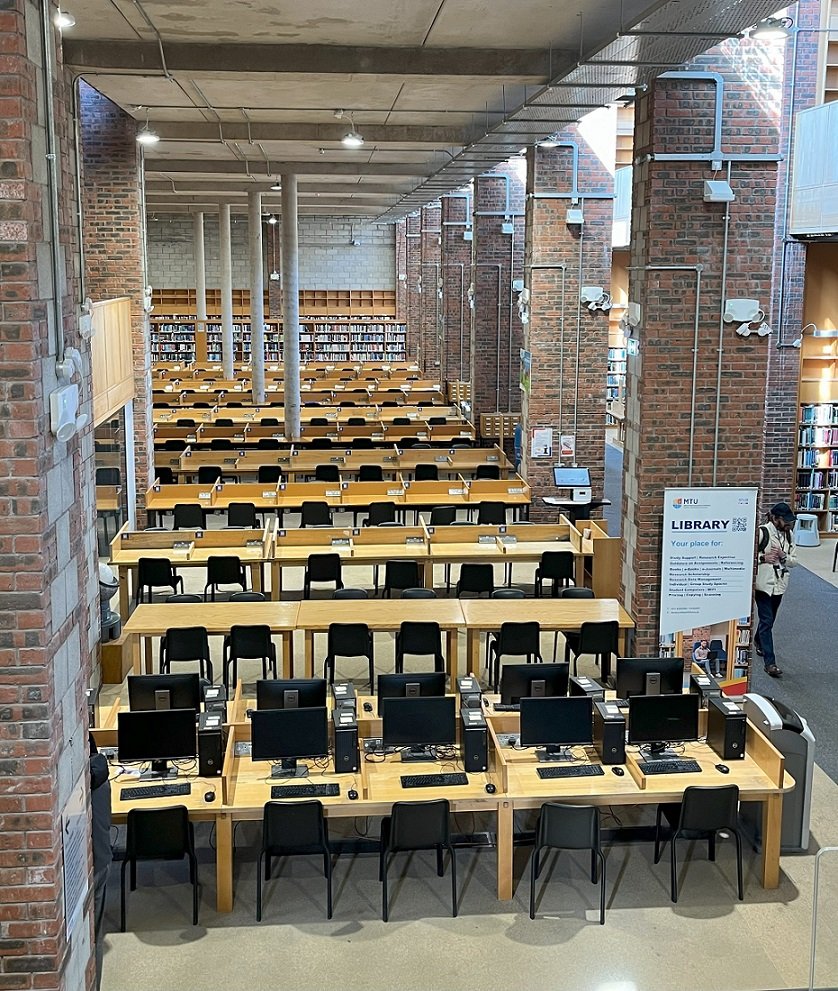
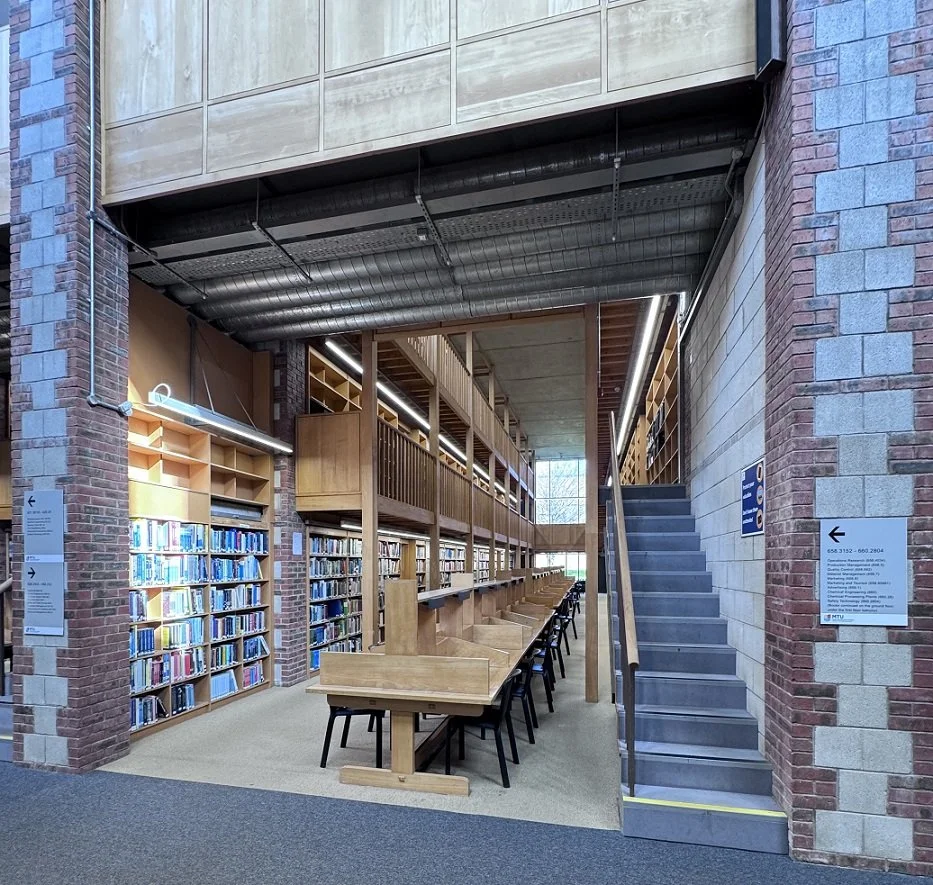


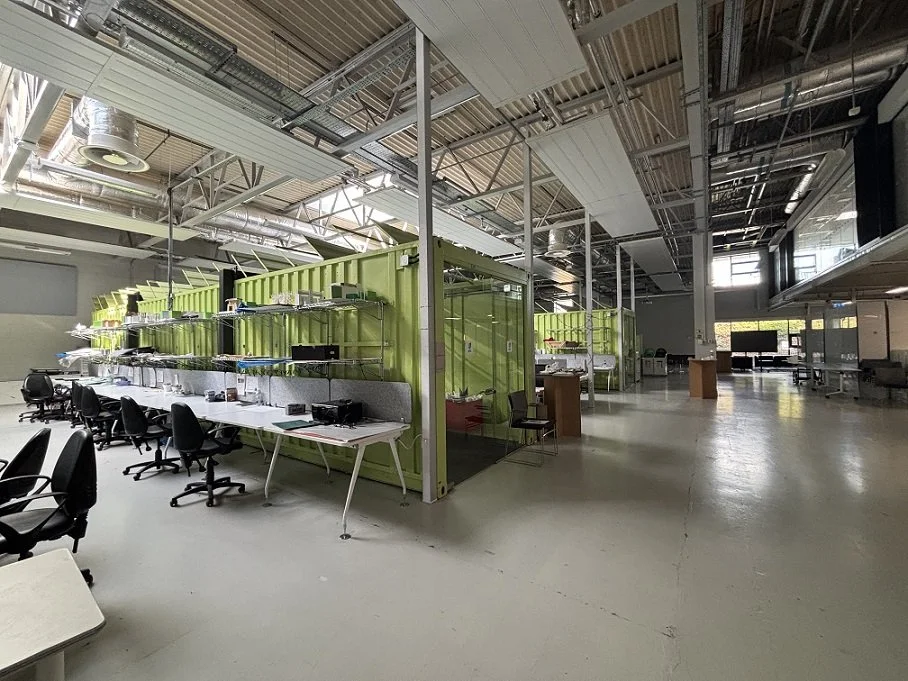
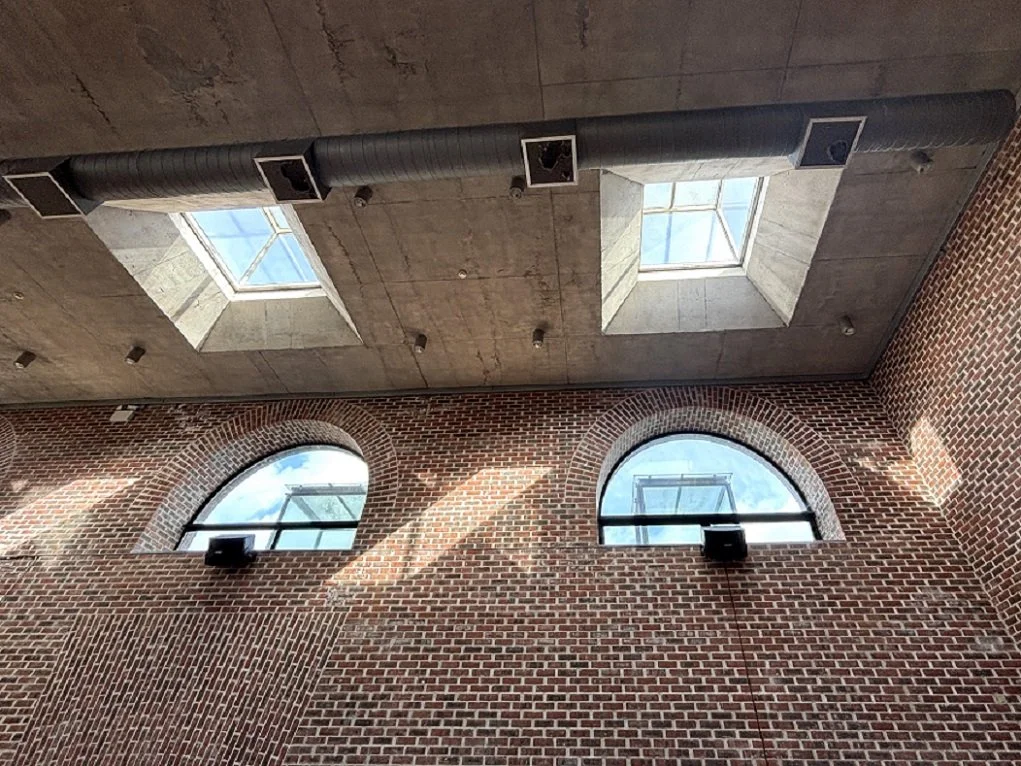
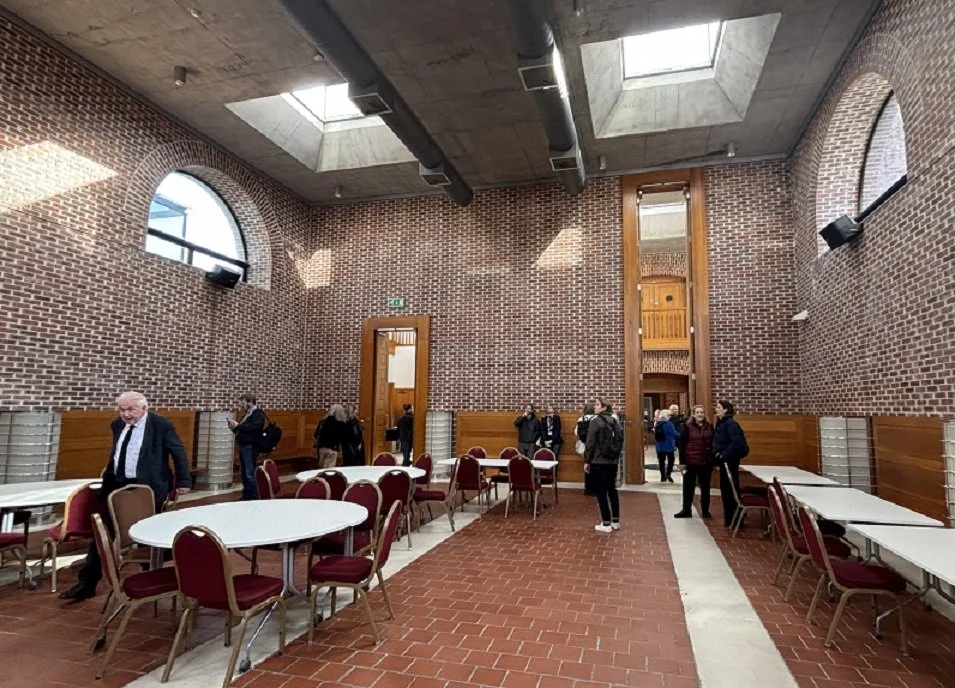
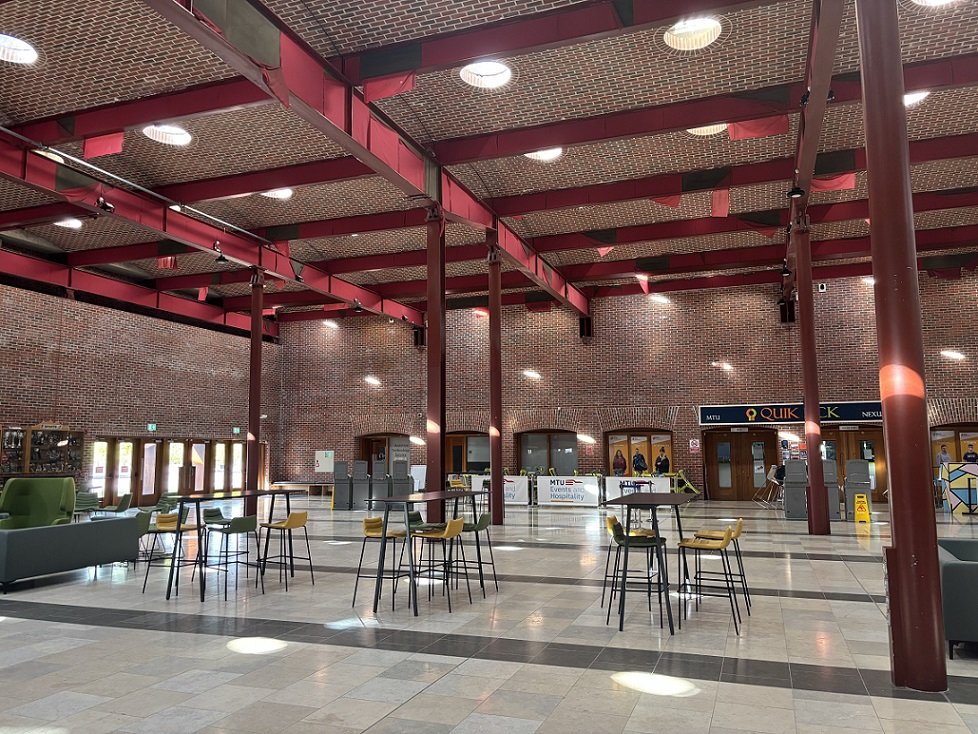




Back at CCAE, the attendees were delighted when the MTU’s architect, de Blacam, joined the Conference, not only to discuss the MTU project, but also to repeat a talk he gave in London in 2023 on receipt of the Royal Academy architectural award.
His anecdotes – full of wit and dry humour -referenced his early travels in America, his studies at the University of Pennsylvania, his work with Louis Kahn on the Mellon Centre for British Arts and Studies at Yale and his own later buildings in Dublin and Cork. ‘America’, he stressed, ‘means a lot to me’.
David Flannery, Principle, Scott Talon Walker
After 2 ½ days of intensive tours and talks, the attendees were now thoroughly attuned to Cork’s unique character and were able to relax and enjoy David Flannery’s further analysis, ‘From the City to the Sea / Cork’s Maritime Character’.
His history of Cork focused on Cork Harbour’s extra deep channels, its Atlantic aspect and the sailing ships using it. Viking longboats, the Titanic and WWII battle cruisers – in other words, multiple invaders, traders and military armadas – all helped shape Cork’s distinctive ambiance. Read more about the architect HERE.
Photo Credits: E Fitzpatrick AIA RIBA
Guilia Valone, Senior Architect, Cork County Council
Guilia Valone addressed the Conference theme of genius loci with particular vigour, adding a Sicilian touch to Irish town planning. In her many examples of ‘placemaking’ and ‘re-inhabiting the streets’, she developed her theme of preserving and enhancing the character of Cork's smaller surrounding towns under the mantra of ‘restore, reveal and redefine’. It was evident that Valone is not fond of the automobile.
Photo Credit: E Fitzpatrick AIA RIBA
John Hegarty, Director, Fourem Architects
The final speaker in his talk entitled ‘Significance of Cork – Classical language in Architecture and Cork City’, started from the unusual perspective of finding similarities between Cork and other historic cities and places. In what ways, he asked, was Cork in 1590 similar to Florence in 1493? In its heyday, Cork regaled in classical buildings built in brick and clad in stone, but only a few remain today. He eagerly identified typical Cork architectural details that ‘anchored’ its historical character. See some selected details HERE.
EXTENSION DAY
A Monday Extension Day for those intrepid attendees spending an extra day at CE Conferences has become a long standing tradition. The Cork Conference Extension Day explored smaller towns surrounding Cork Harbour, primarily Kinsale and Cobh, and included several special attractions:
The Joseph Walsh Sculpture Studio (See HERE)
The Charles Fort (See HERE)
Titanic and Lusitania Museum (See HERE)
Kinsale Library designed by Cork County Council (See HERE)
In Kinsale, the attendees visited two contrasting RIAI award winning projects of note. The Kinsale Public Library won the 2024 ‘Conservation, Adaptation and Re-Use’ award and O’Donnell + Tuomey’s Stone Vessel won the 2024 RIAI ‘Special Award for Collaboration between Designers and Craftspersons’.
The Stone Vessel and Extension Day Attendees. Photo Credit: Ruth Murphy, Joseph Walsh Studio.
Cobh Harbour and the Kinsale Library. Photo Credits: RD Reber AIA and H Giblin Int’l Assoc AIA FRIAI.



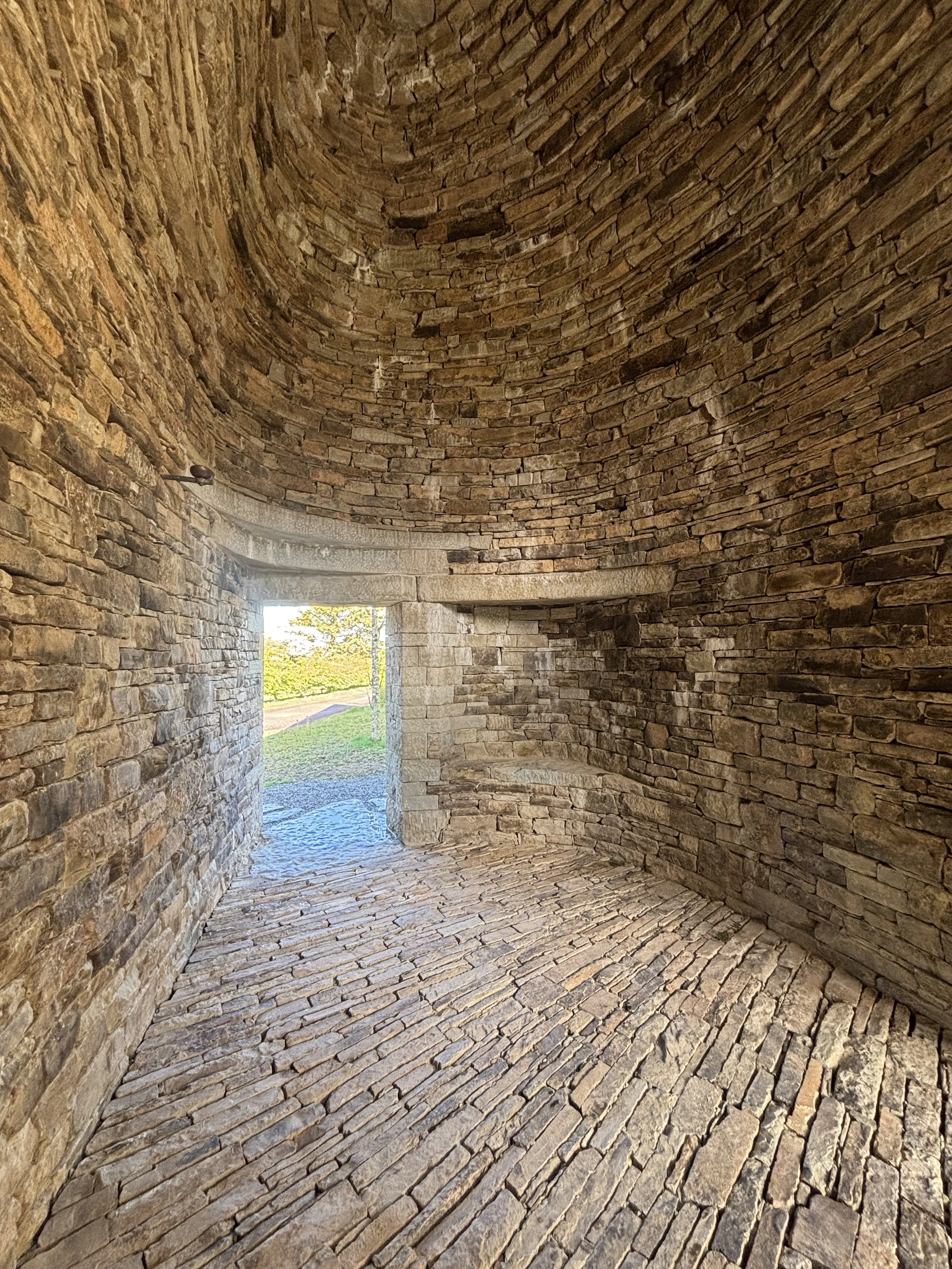


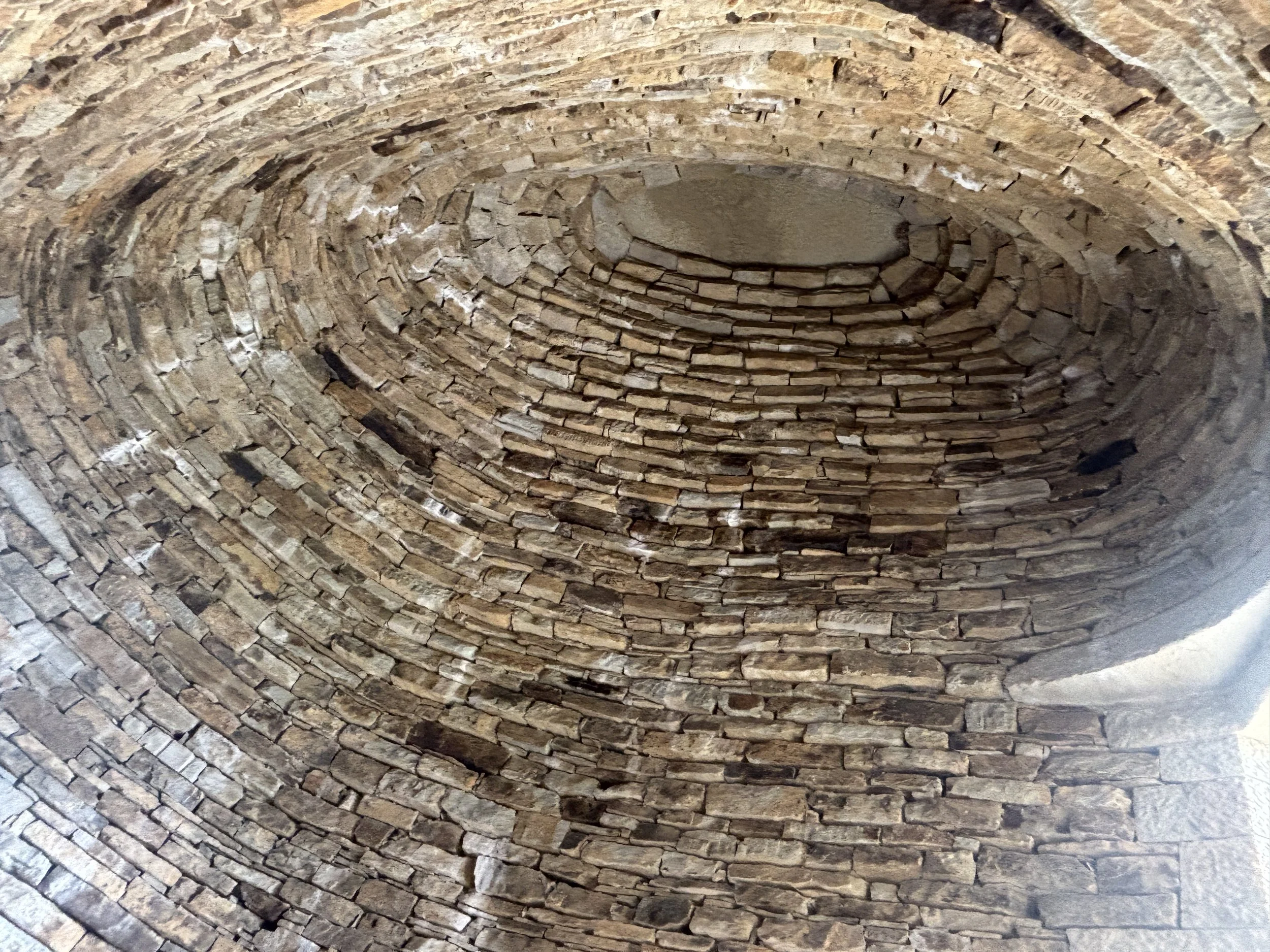







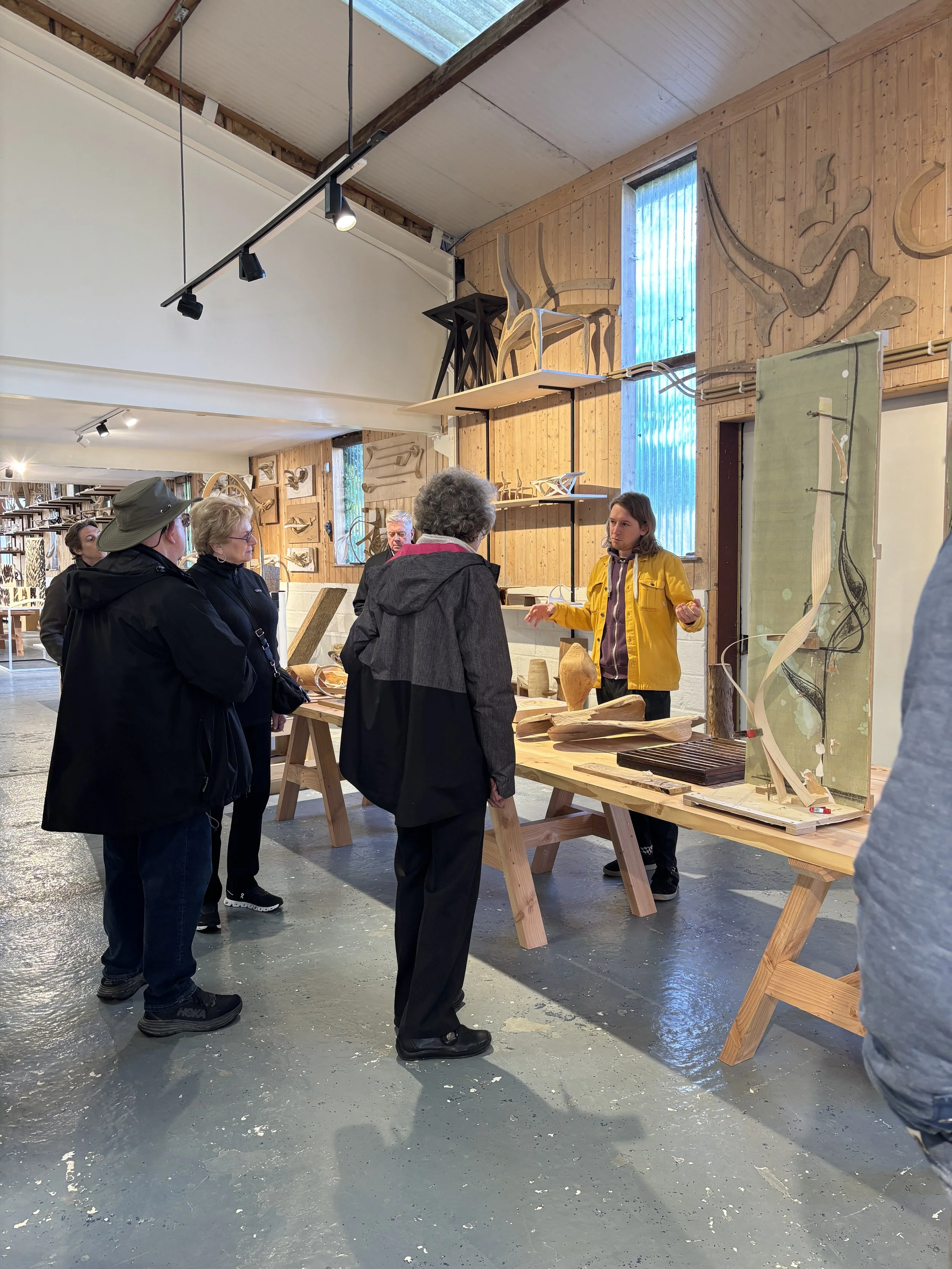














SUMMARY
Photo Credit: Liam Quinn
The 2025 Cork Conference was a joint effort from the two first AIA International Chapters - AIA Continental Europe and AIA United Kingdom - and was attended by 60 architects and guests.
The organising committee - Etain Fitzpatrick AIA RIBA and Helen Giblin FRIAI AIA Int’l Assoc - began conference planning in 2019, anticipating a Fall 2020 date. However, the Covid pandemic intervened and planning was put on indefinite hold even as the organizers received continual pleas from AIA colleagues to set a new date. Spring 2025 with its beautiful weather became a happy choice for all.
Once planning was reactivated in 2024, the organising committee recruited Karen Hassey AIA RIAI for additional help. Then - as always - AIA CE’s Chapter Executive, Irene Reidy, stepped in to provide excellent coordination, organisational skills and patience to keep the show on the road.
The conference received essential support from the many speakers representing prestigious RIAI firms in Cork and Dublin who so graciously volunteered their time. Speakers and attendees alike were also thankful for the support of Cork City Council and Cork County Council. Their enthusiastic and warm welcome ensured all participants felt very much at home.
Additional information on the Cork Conference can be found here:
Etain Fitzpatrick AIA RIBA, Irene Reidy and Helen Giblin FRIAI AIA Int’l Assoc, Karen Hassey AIA RIAI
Written by L D King, AIA (with assistance from E Fitzpatrick, AIA and H Giblin Int’l Assoc AIA)
On behalf of AIA Continental Europe and AIA United Kingdom
In special recognition of 30 years of cooperation and mutual appreciation between AIA Continental Europe and AIA United Kingdom, AIA UK has assembled a collection of its newsletters honouring past CE and joint CE/UK events from 1996 that can be found HERE.
AIA Continental Europe & AIA United Kingdom Conference / Cork, Ireland – ‘Genius Loci’ - Part II
The River Lee and a limestone outcrop form the idyllic setting for the University College Cork. Photo Credit: L King AIA
Day 2: Cork – Buildings for Culture and Education
The second day of the Conference started with a long trek upriver to the tranquil campus of the University College Cork (UCC) for a leisurely exploration of its landscape and buildings and attendance at multiple well received talks.
Heinrik Wolterstorff, O’Donnell + Tuomey
According to the morning’s speaker, Heinrik Wolterstorff, Sir Thomas Deane, the architect of UCC, undertook an extensive search on horseback in the 1840’s for the ideal site for the newly endowed Cork college. Following a branch of the River Lee, he eventually found a band of peasant farmers tending a lush meadow backed by a dramatic outcrop of limestone. The idyllic site – sans peasants and horses - remains the backdrop for the college today.
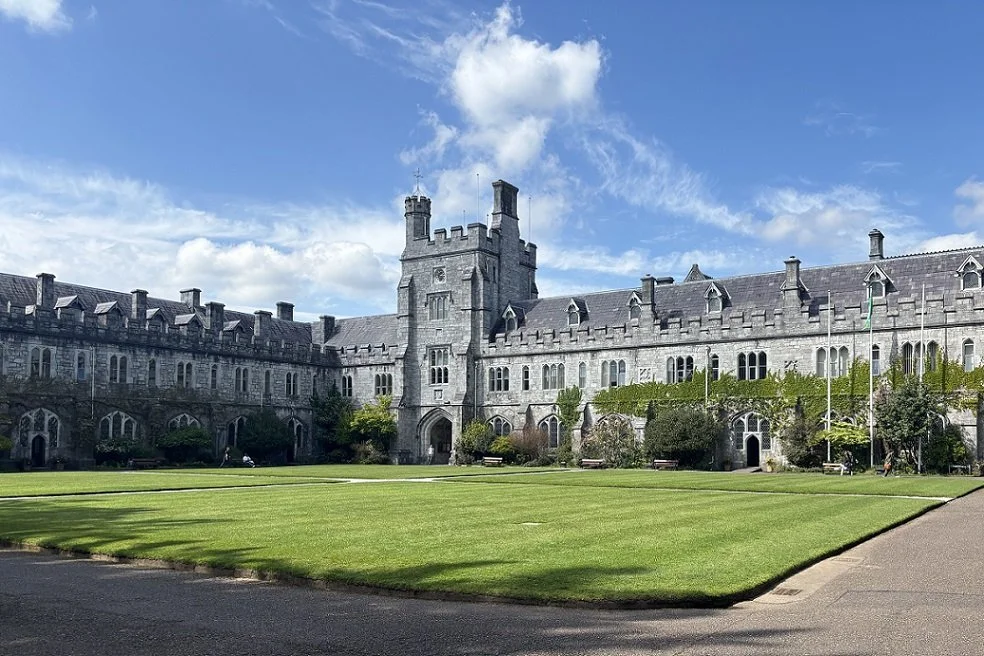

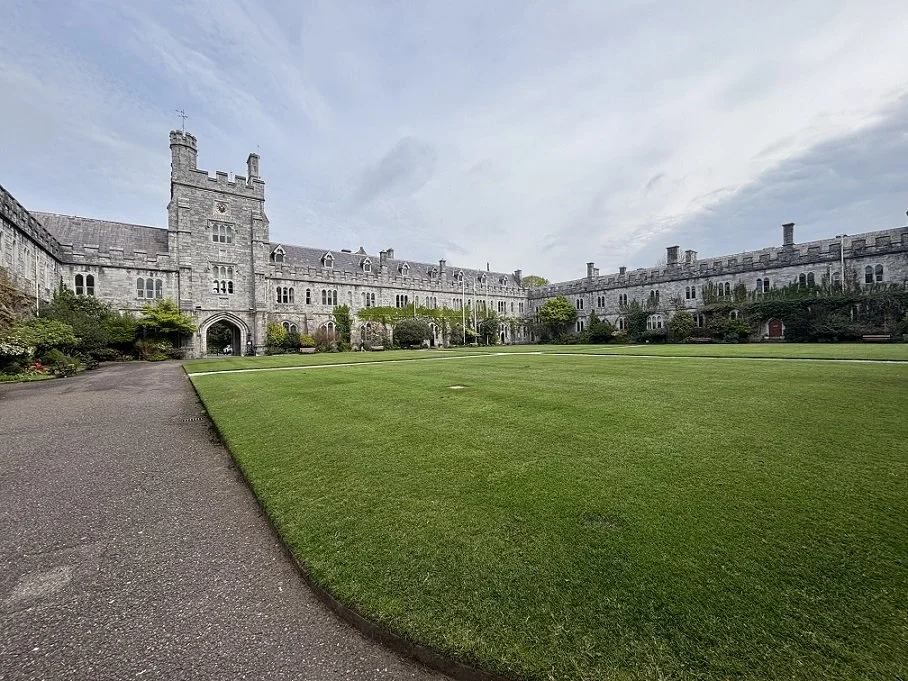




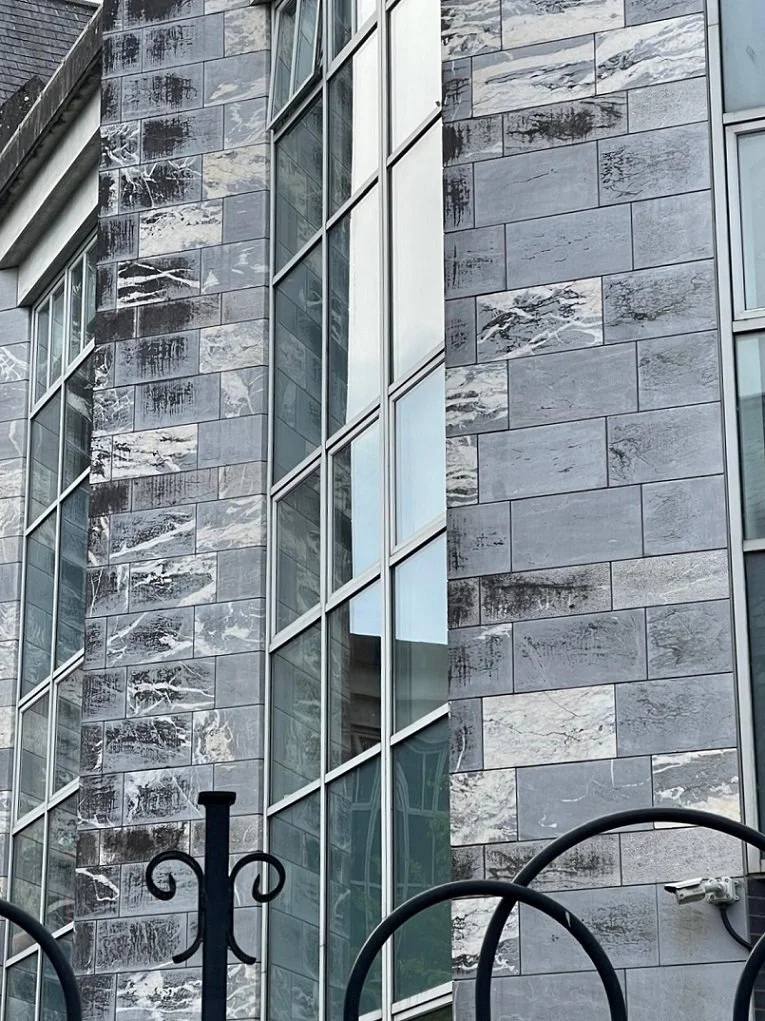
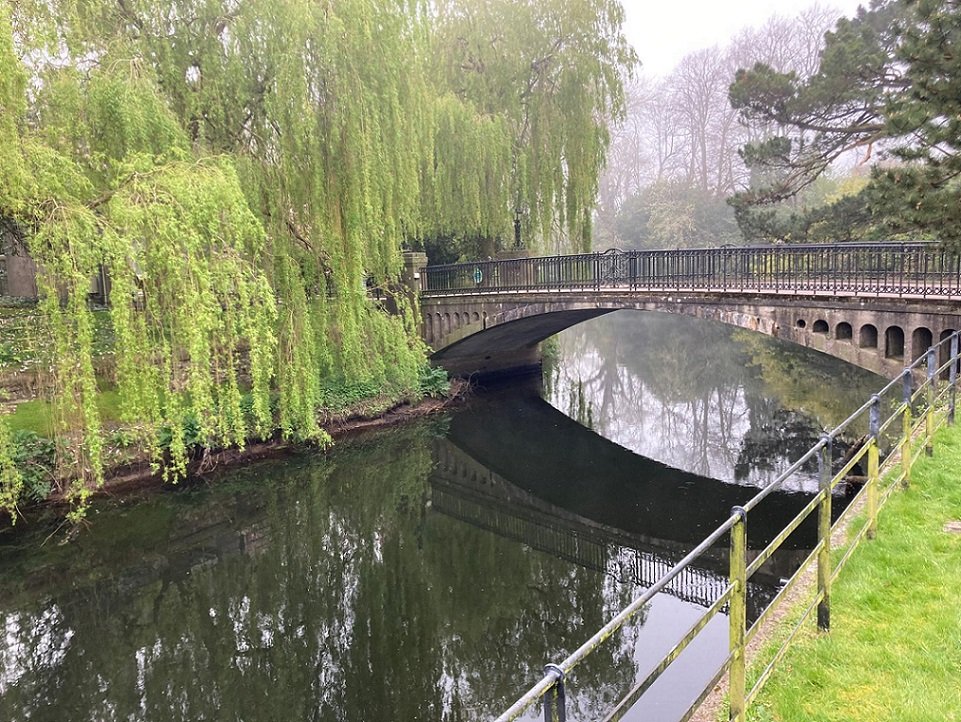

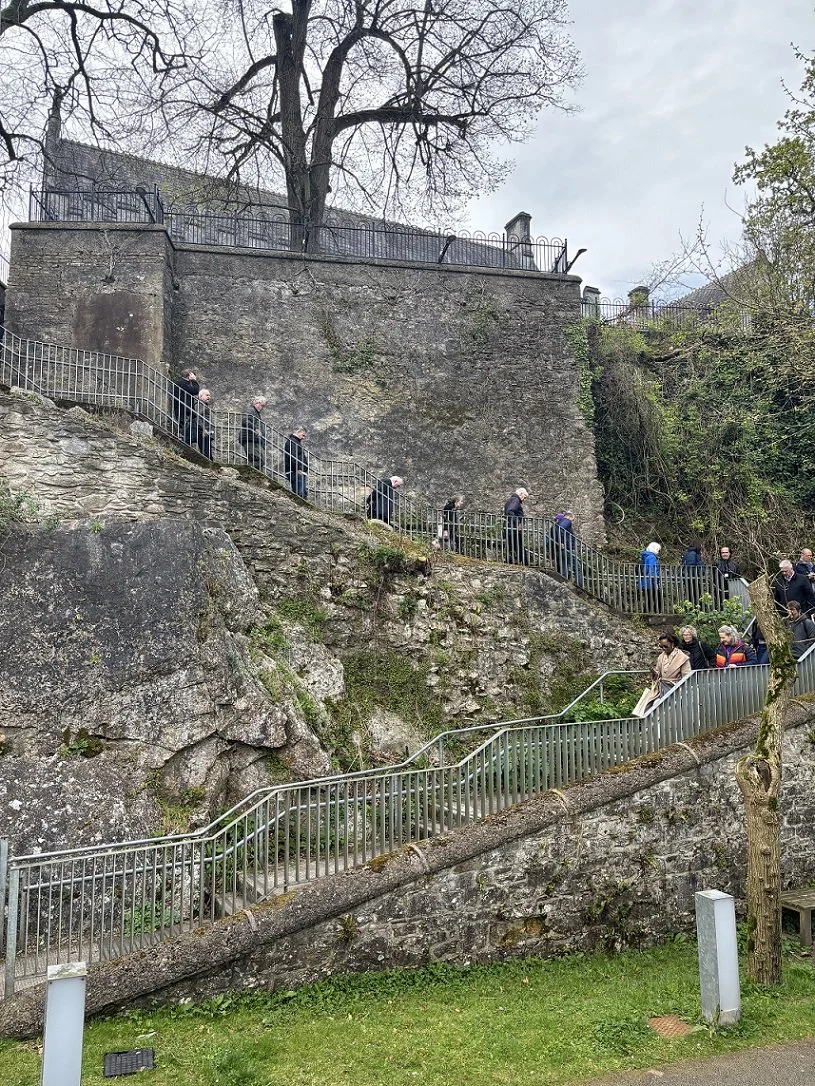




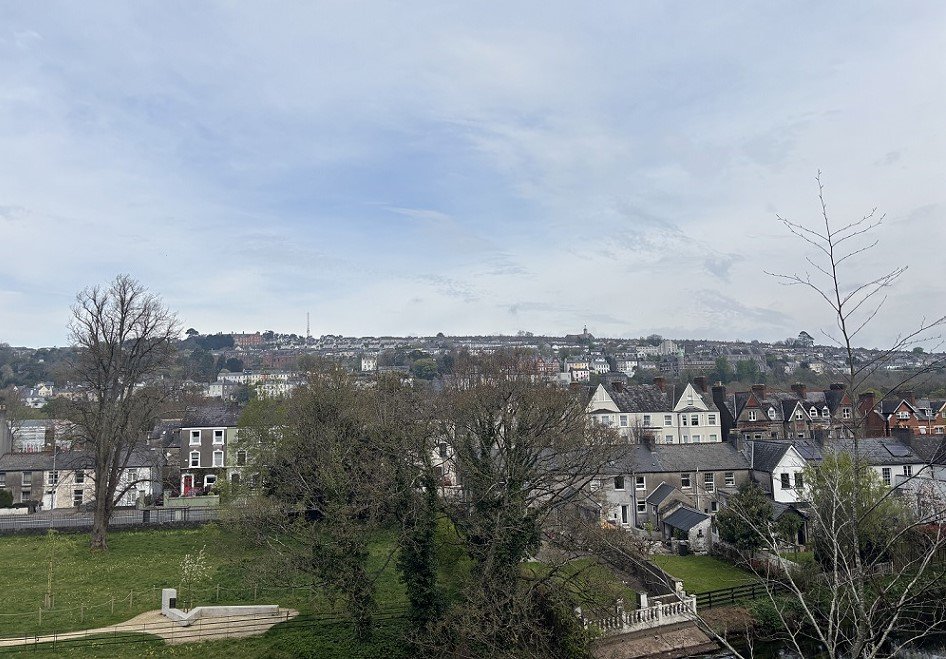
The morning talks and tours focused on two buildings by O’Donnell + Tuomey. Read more about the architects HERE.
First, the Hub - a student centre created out of a renovated, previously redundant building from the 1800s. The Hub introduced the attendees to the UCC and served as the conference venue for the day. Read more about the Hub HERE.
Photo Credit: H Kessler FAIA
Photo Credits: M Lischer FAIA
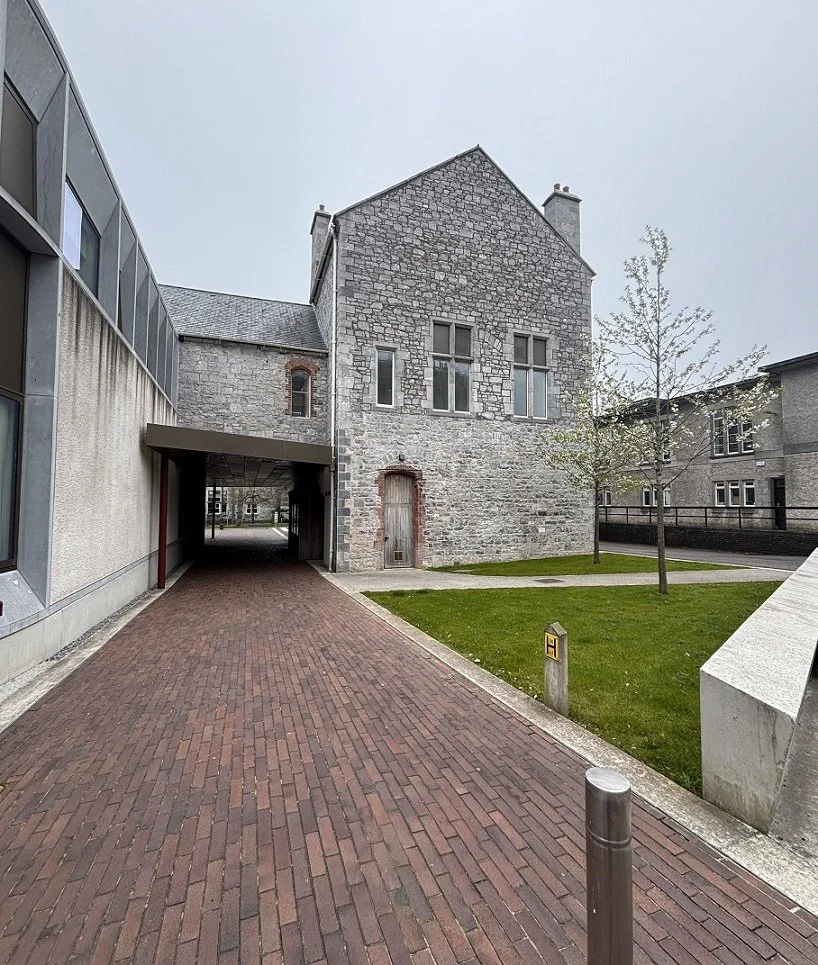




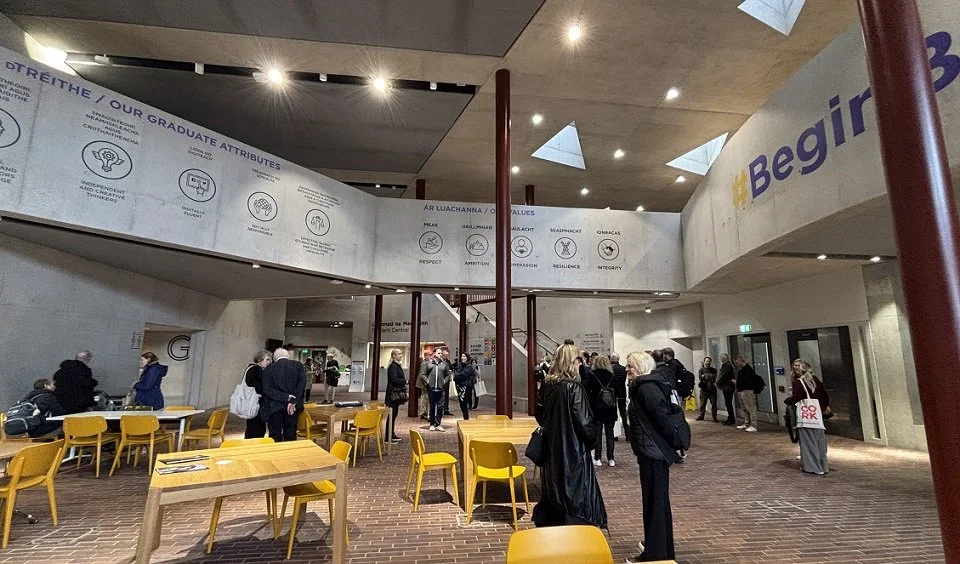
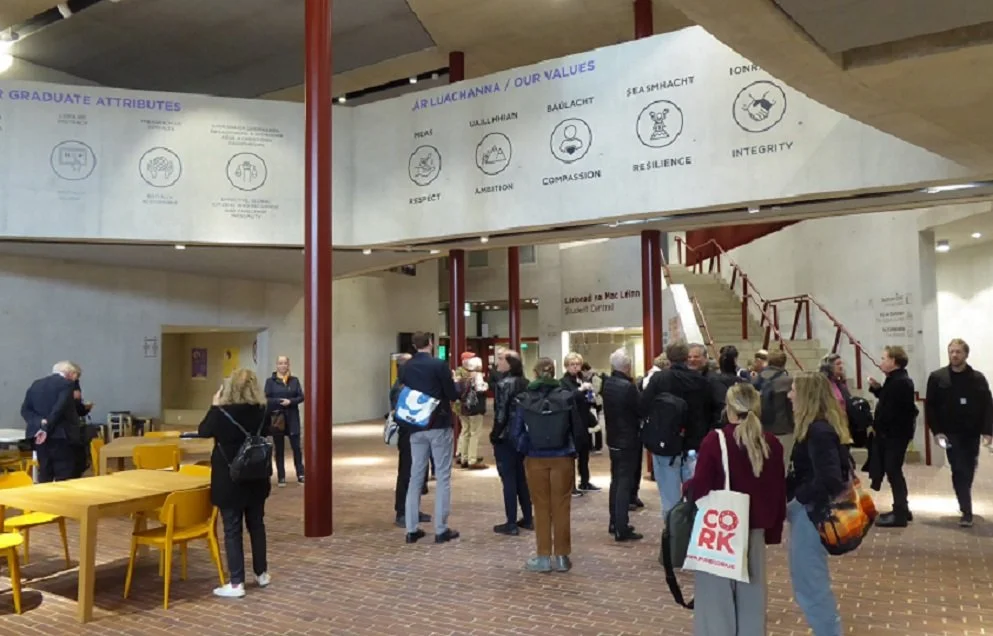
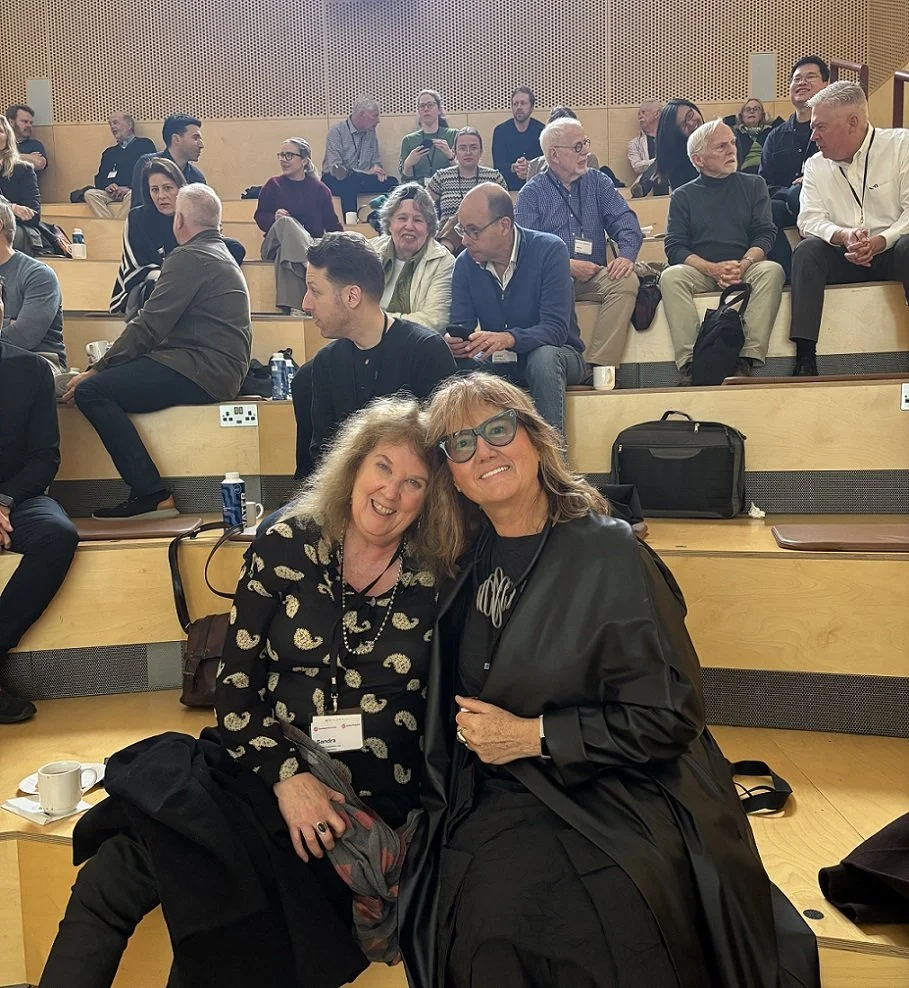
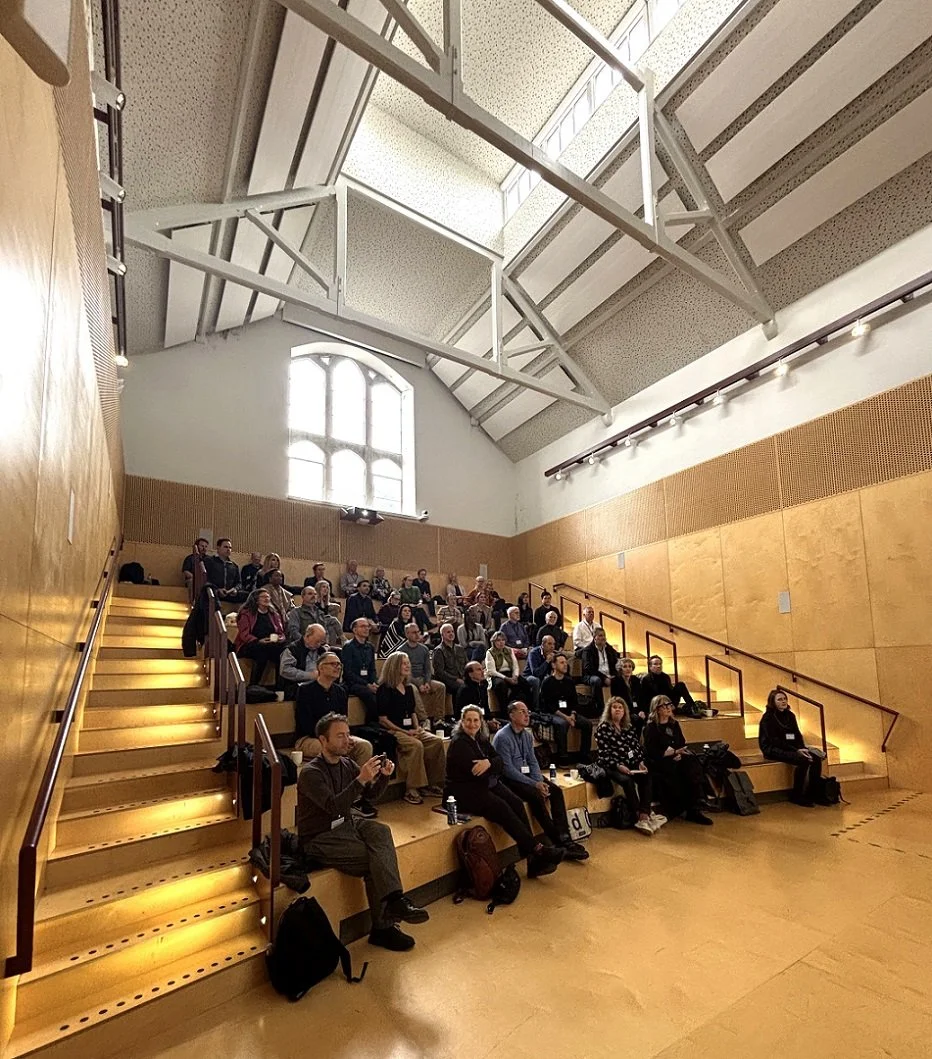
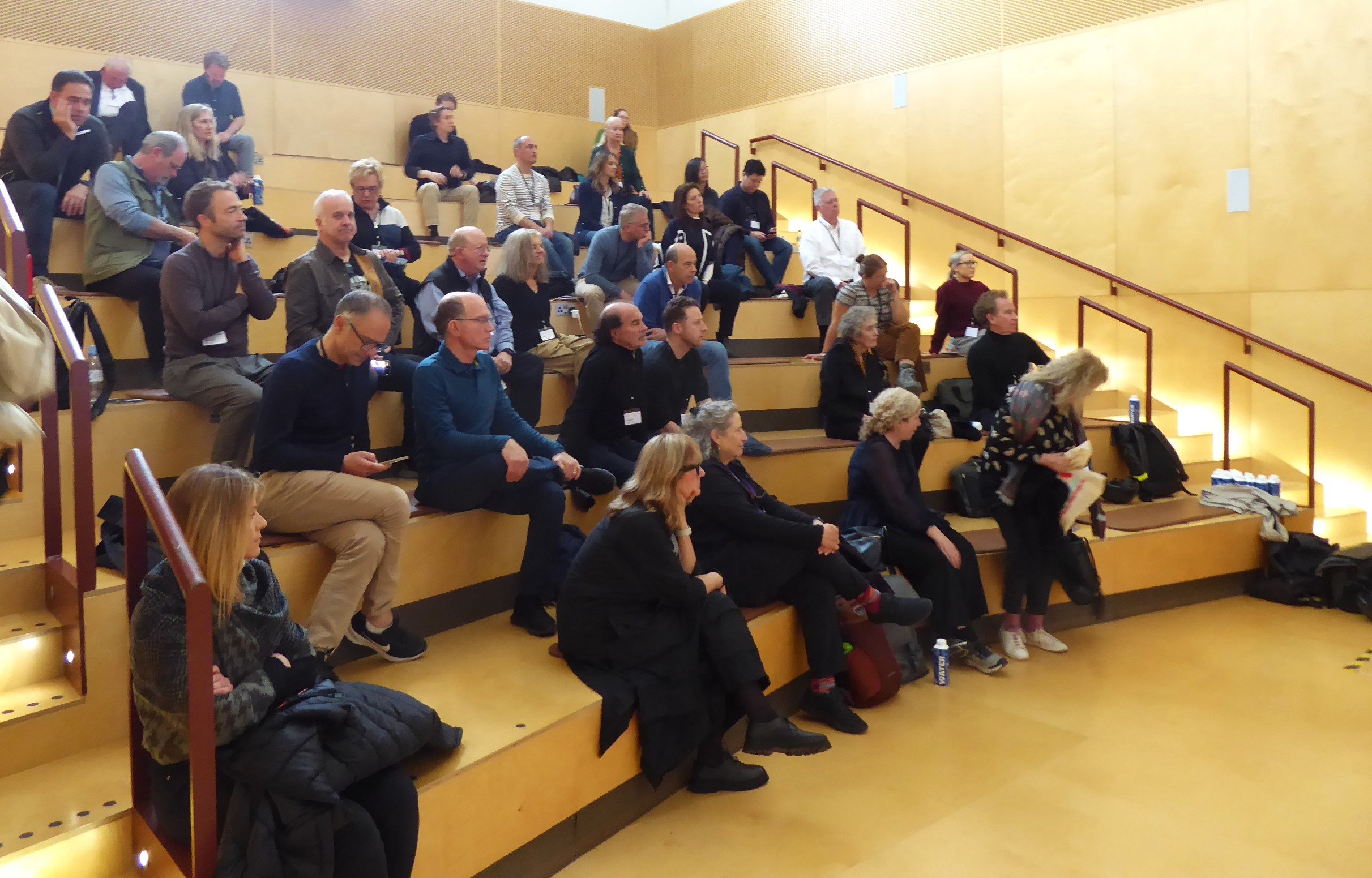


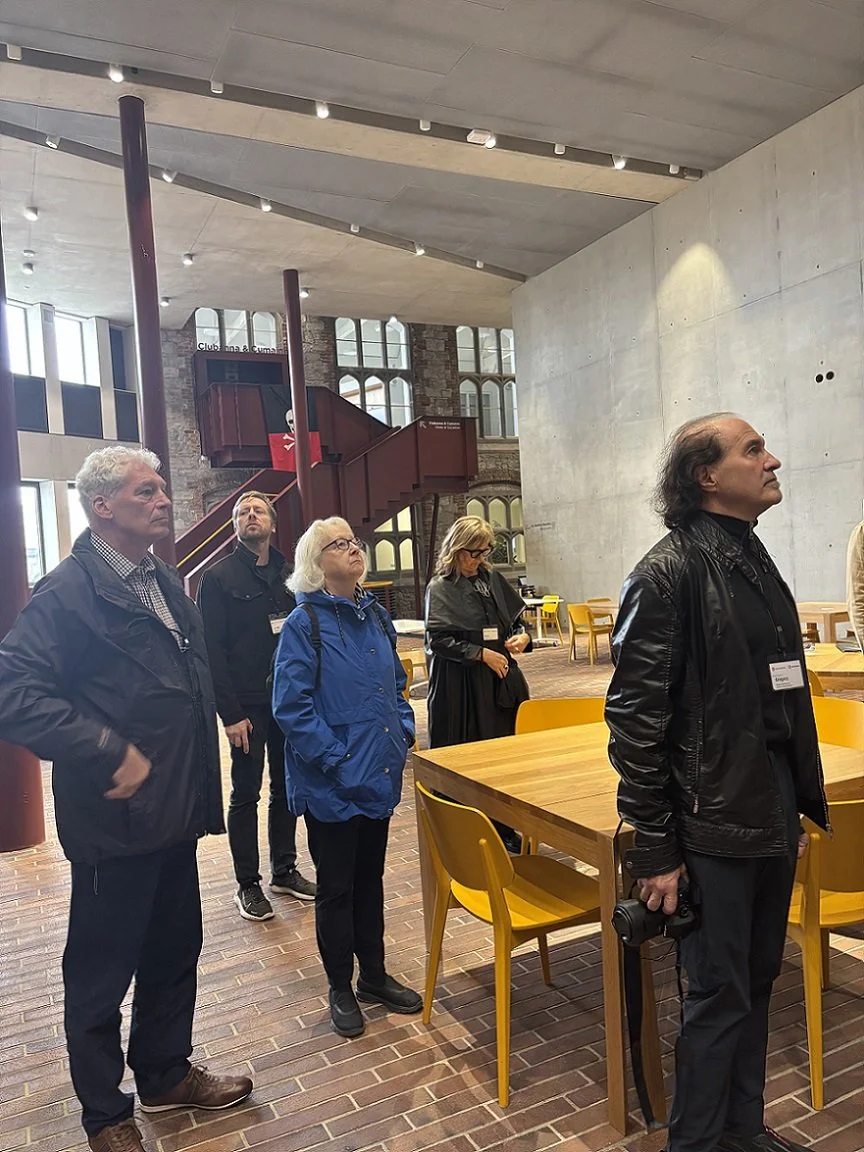

Second, the Glucksman Gallery - a dramatic new build, incorporating an art gallery and restaurant - completed in 2005. The site on the edge of the campus was chosen to encourage attendance by the local community who might otherwise avoid encroaching on the ancient university. Inserted amongst mature trees, the Gallery’s bold configuration distinguishes it from the original campus buildings, while at the same time its strategic window views connect it to both the wider neighbourhood and the place setting River Lee
Photo Credit: B Oknyansky AIA
Photo Credits: H Chong
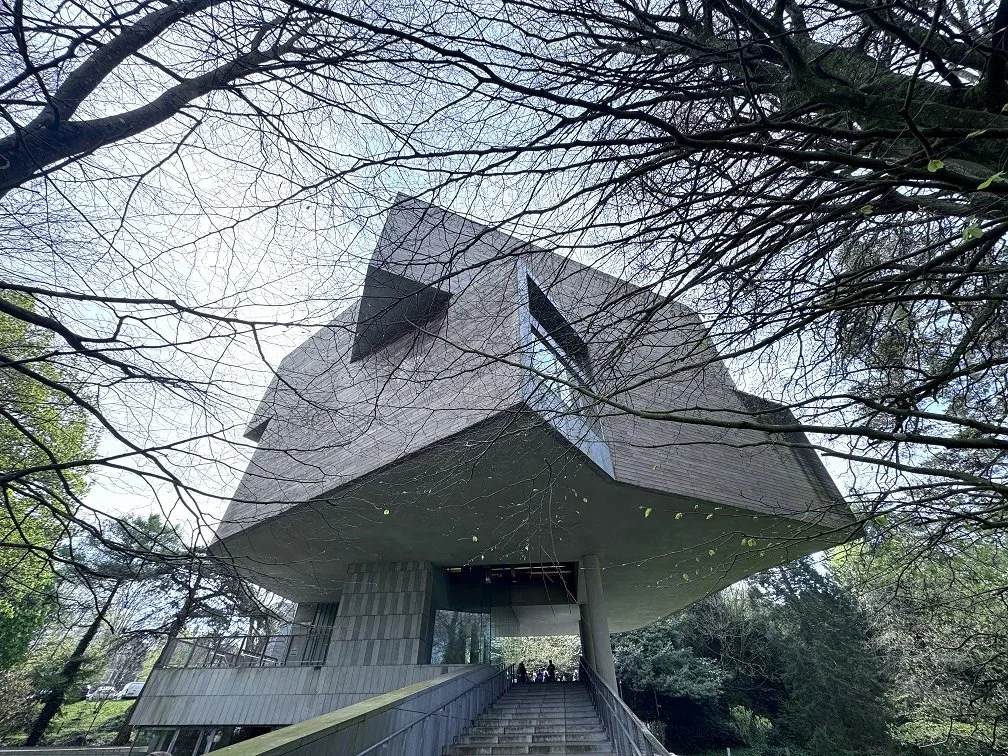

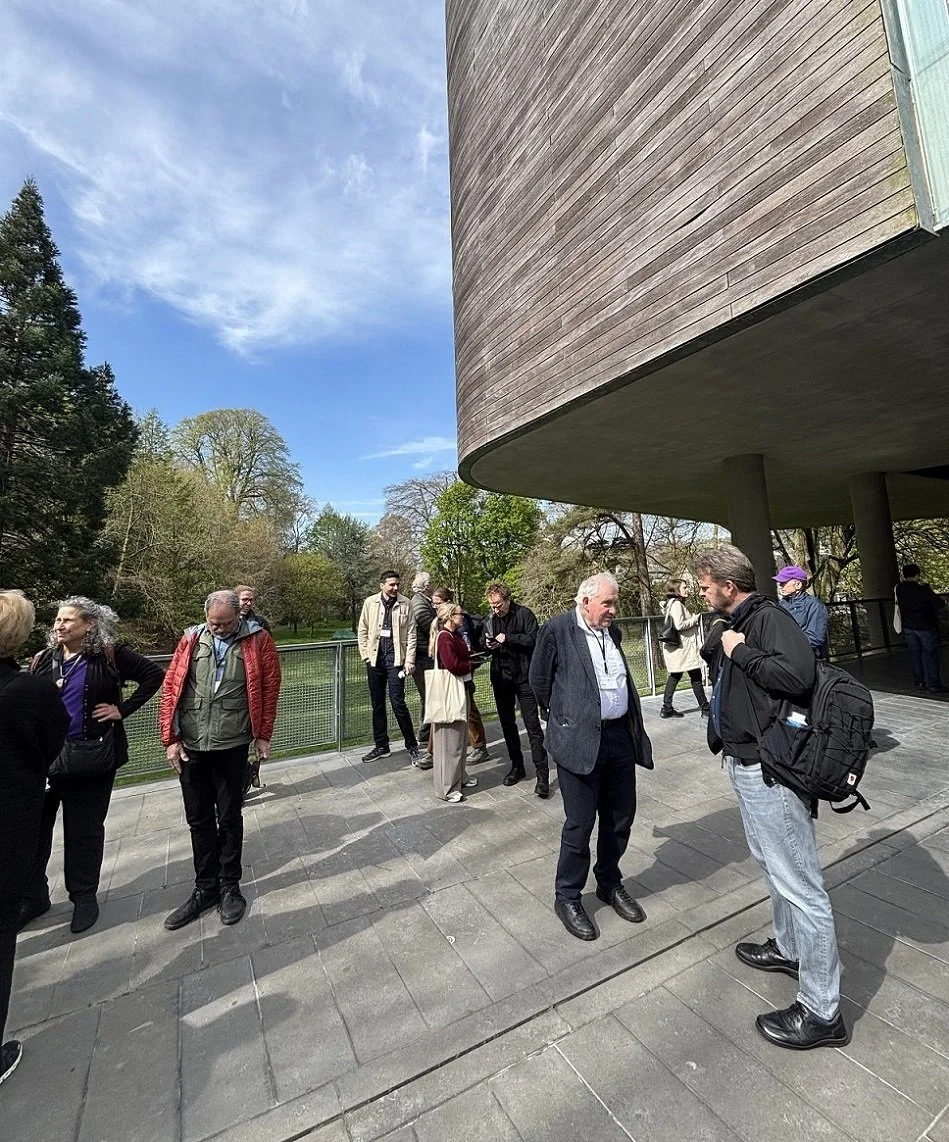
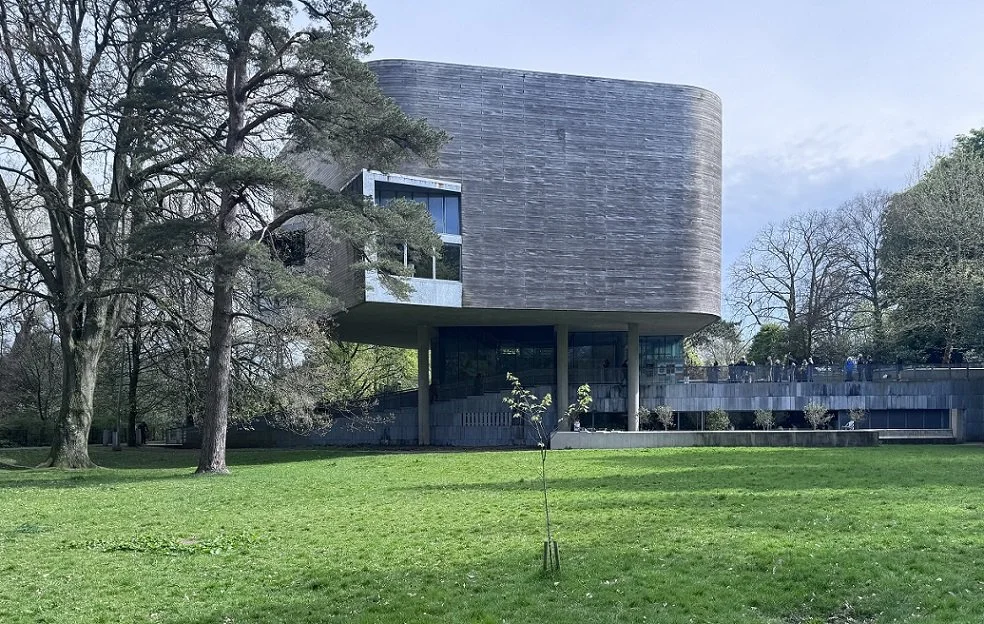









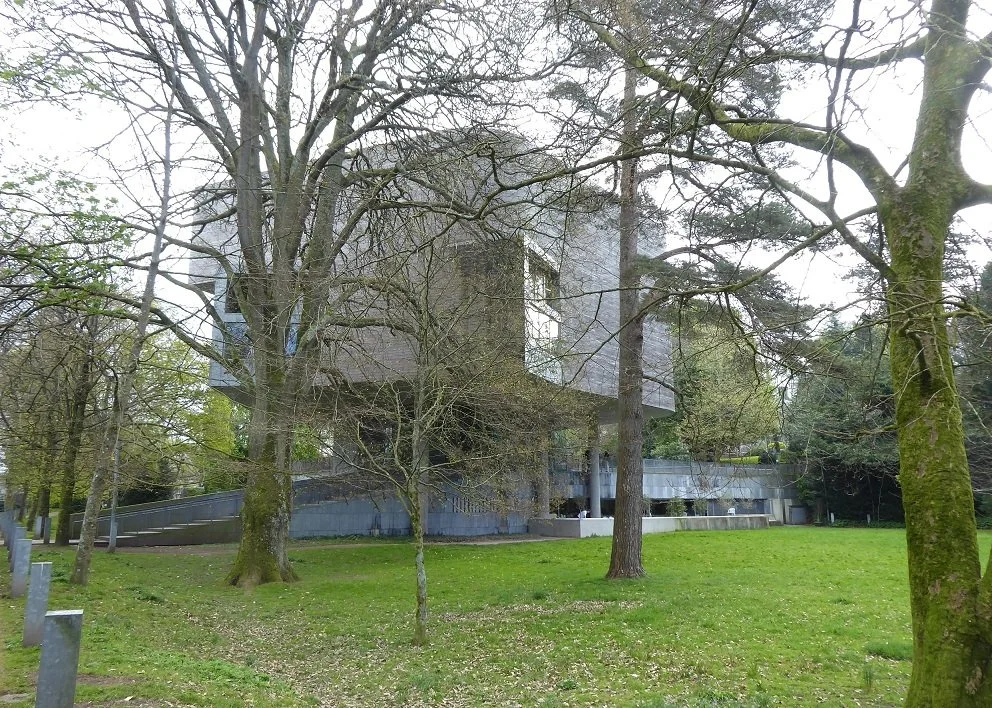





During the campus tour, the attendees stopped for an unplanned but welcomed visit to the UCC Honan Chapel, built in the Hiberno-Romanesque revival style complete with vibrant, fascinating floor mosaics. The small, architectural gem exemplified the best of the Irish arts and craft movement (1894 – 1925).
Photo Credits: H Chong & B Oknyansky AIA
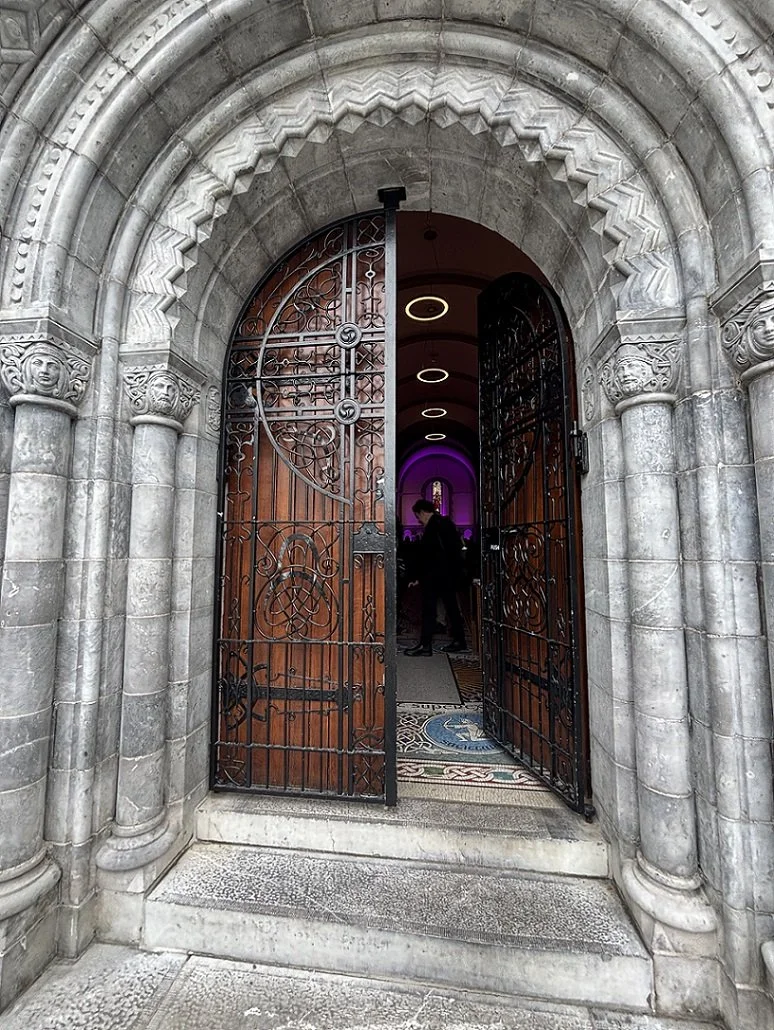

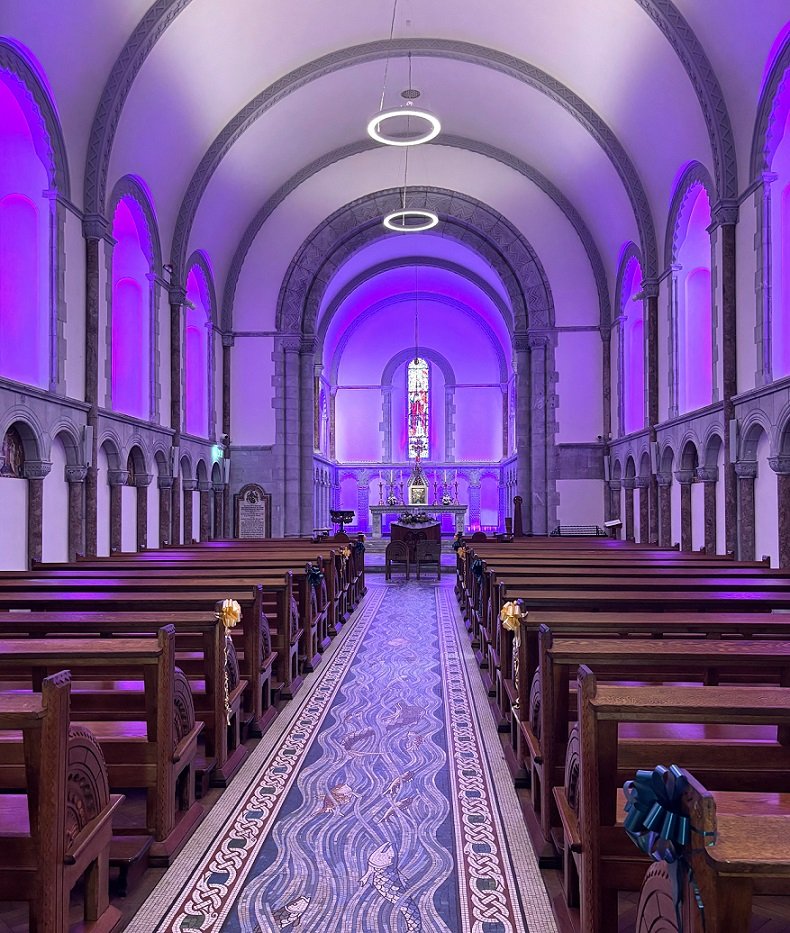

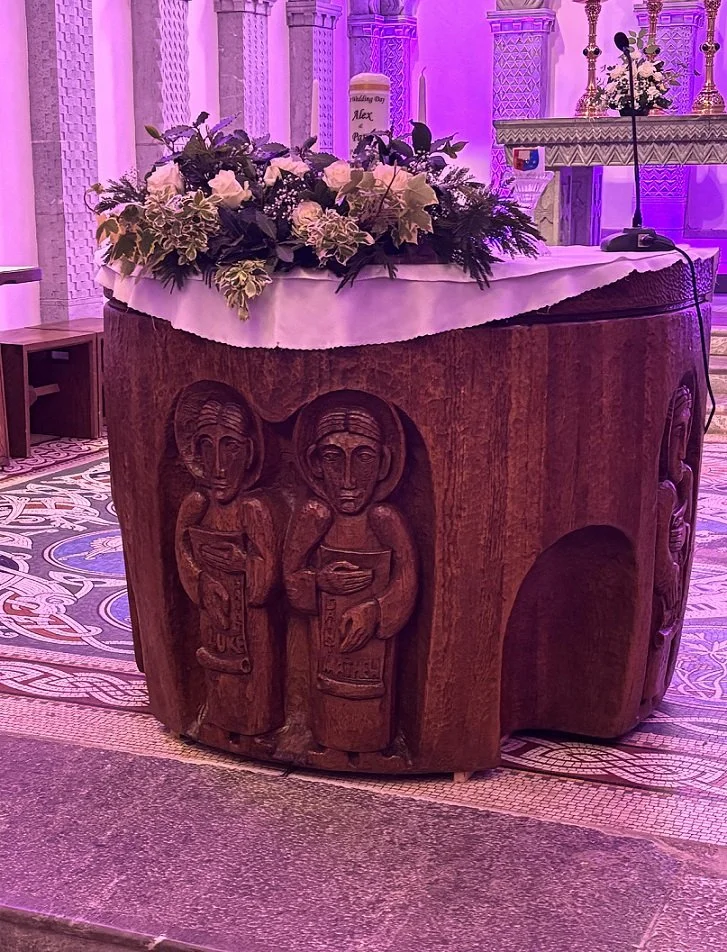


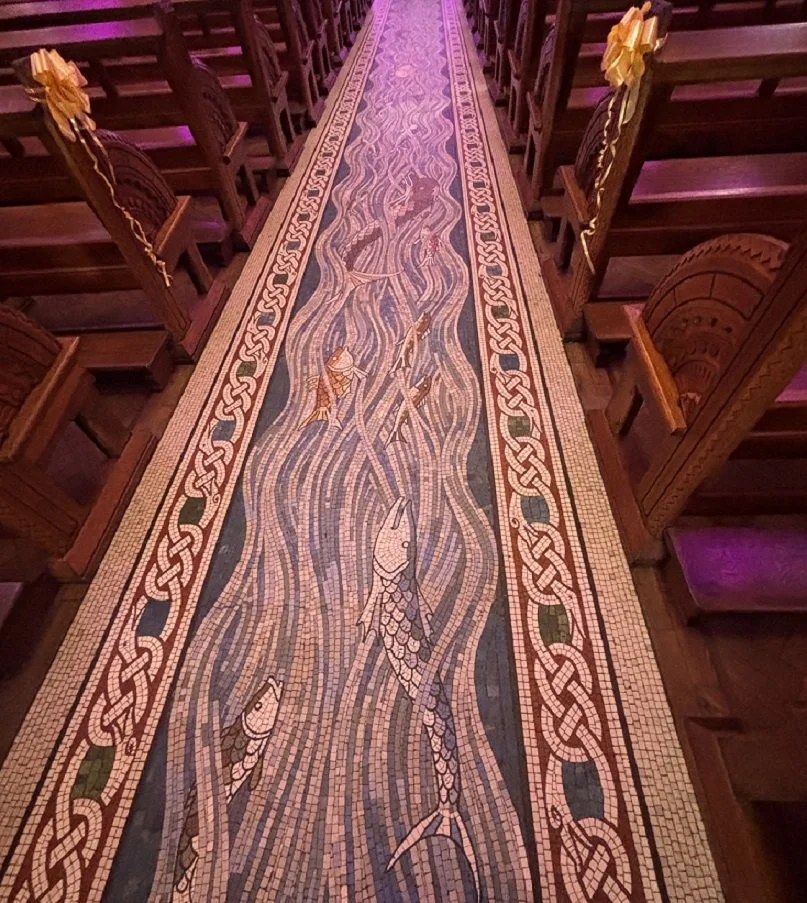




Alex Ianchenko, the 2024 AIA Continental Europe Scholarship Recipient
Dami Babalola, the AIA UK Sponsor Representing Axalta
Nicola Smith, the AIA Continental Europe Sponsor Representing Laufen
After lunch at Lea’s in the Gluckman (sponsored by Axalta), the attendees returned to the Hub for a series of technical talks.
Alex Ianchencko, the AIA CE Scholarship Recipient, gave an impassioned talk on her research into sustainability forecasts, starting with the startling statistic that the earth’s global emissions currently stand at a staggering 47 billion tons CO2 eq/year, whereas its safe operating space projects at only 2.51 billion tons CO2 eq/year.
Dami Babalola, the AIA UK Sponsor Representative from Axalta (powder coating manufacturer) charted her research into the transformation of colour trends over the last five years. Her conclusions: architects and designers currently trend towards darker, warmer ‘earth tones’. Read more about Axalta HERE.
Nicola Smith, the AIA CE Sponsor Representative from Laufen (ceramic sanitary wares) stressed both its innovation and sustainability credentials. In 2024, Laufen reached a milestone with its development of an electric kiln. In 2025, Laufen received an Ecovadis platinum award for the top 1% of companies assessed for sustainability performance. It aims to reach net zero in its production within the next few years. Read more about Laufen HERE.
Merritt Bucholz and Karen Mc Evoy, Founding Directors at Bucholz McEvoy Architects
The day’s final talk featured Bucholz McEvoy Architects and their extensive repertoire of ‘low carbon architecture in Cork and beyond’ – or in the language of their talk, ‘breathing buildings’. Their designs – that also incorporate extensive use of wood as a core structural component - were based on the analogy of a tree that breathes in CO2 and releases O2 without traditional HVAC solutions and paraphernalia. Read more about Bucholz McEvoy HERE.
Photo Credit: E Fitzpatrick AIA
THE CONFERENCE DINNER
Saturday night gala dinners are an AIA CE tradition, with this year’s event held in an Irish stately home on the outskirts of Cork, Fota House on Fota Island. Before dinner, the attendees were given a tour of the house, which was originally built as an 18th century hunting lodge, then expanded in the 19th century. The tour included both its downstairs kitchen and servants areas and its impressive upstairs dining rooms.
Photo Credit: L King AIA


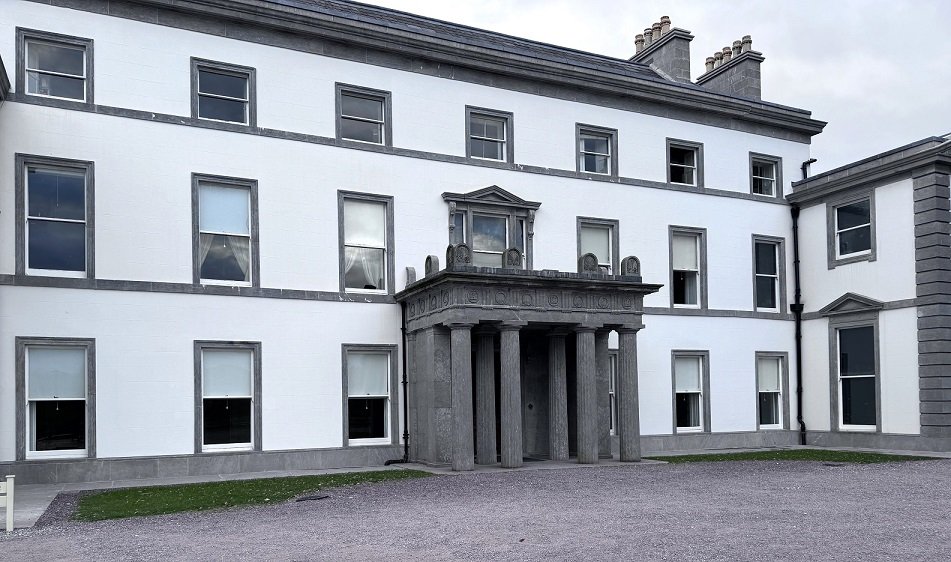

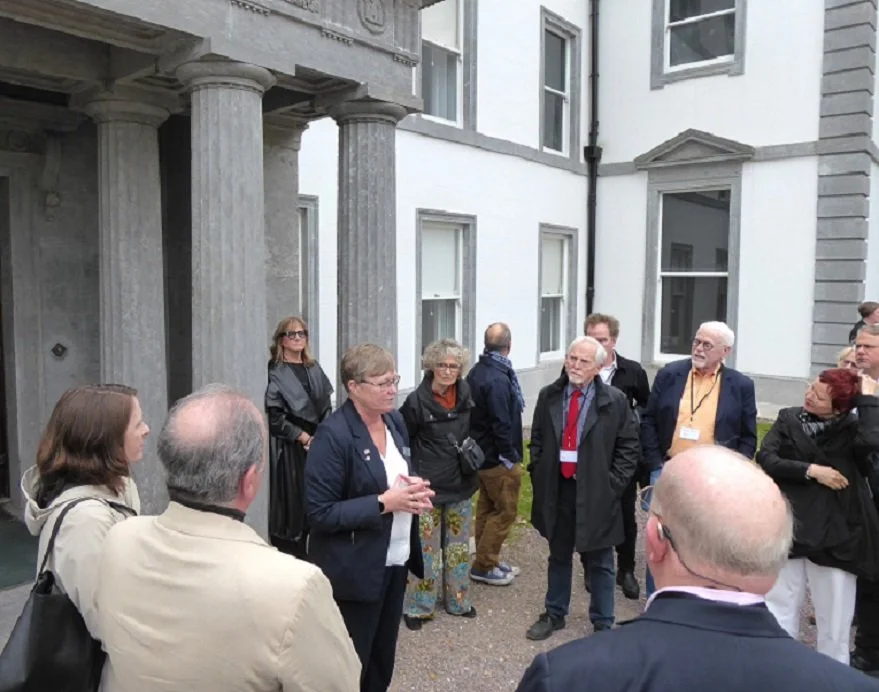

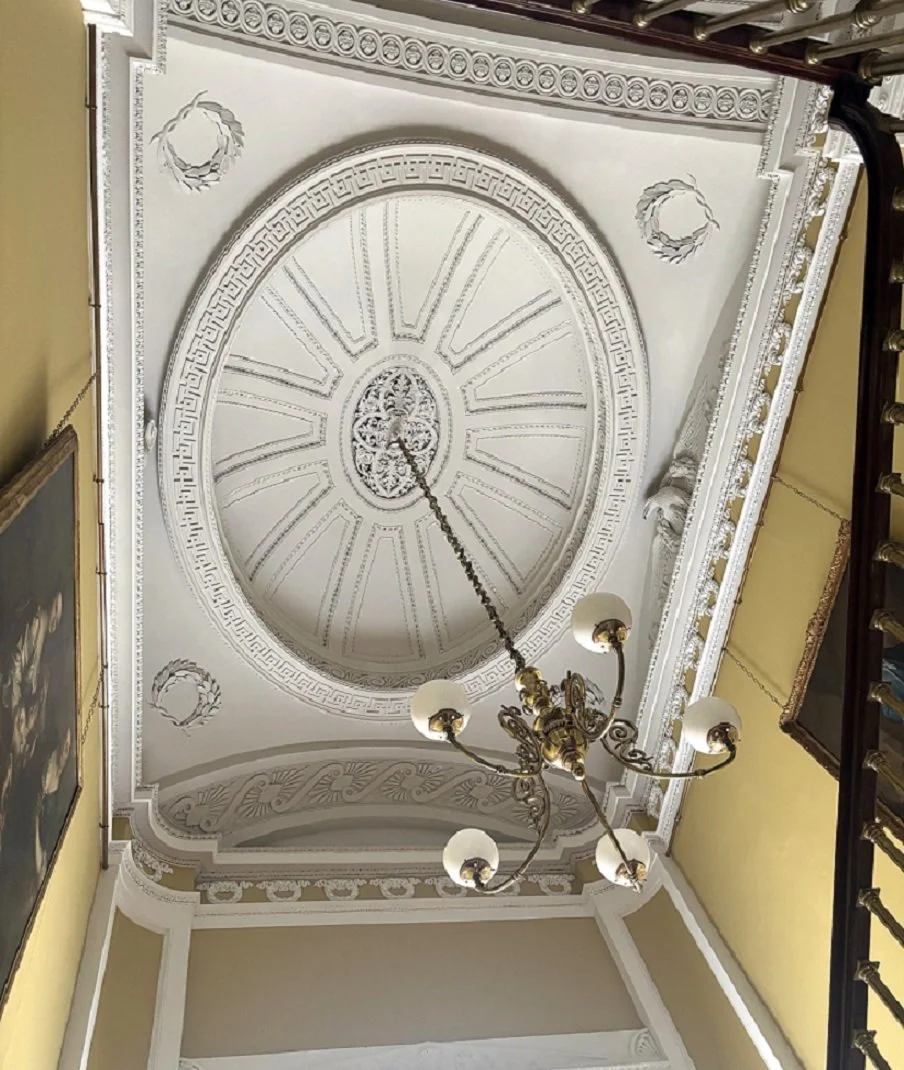
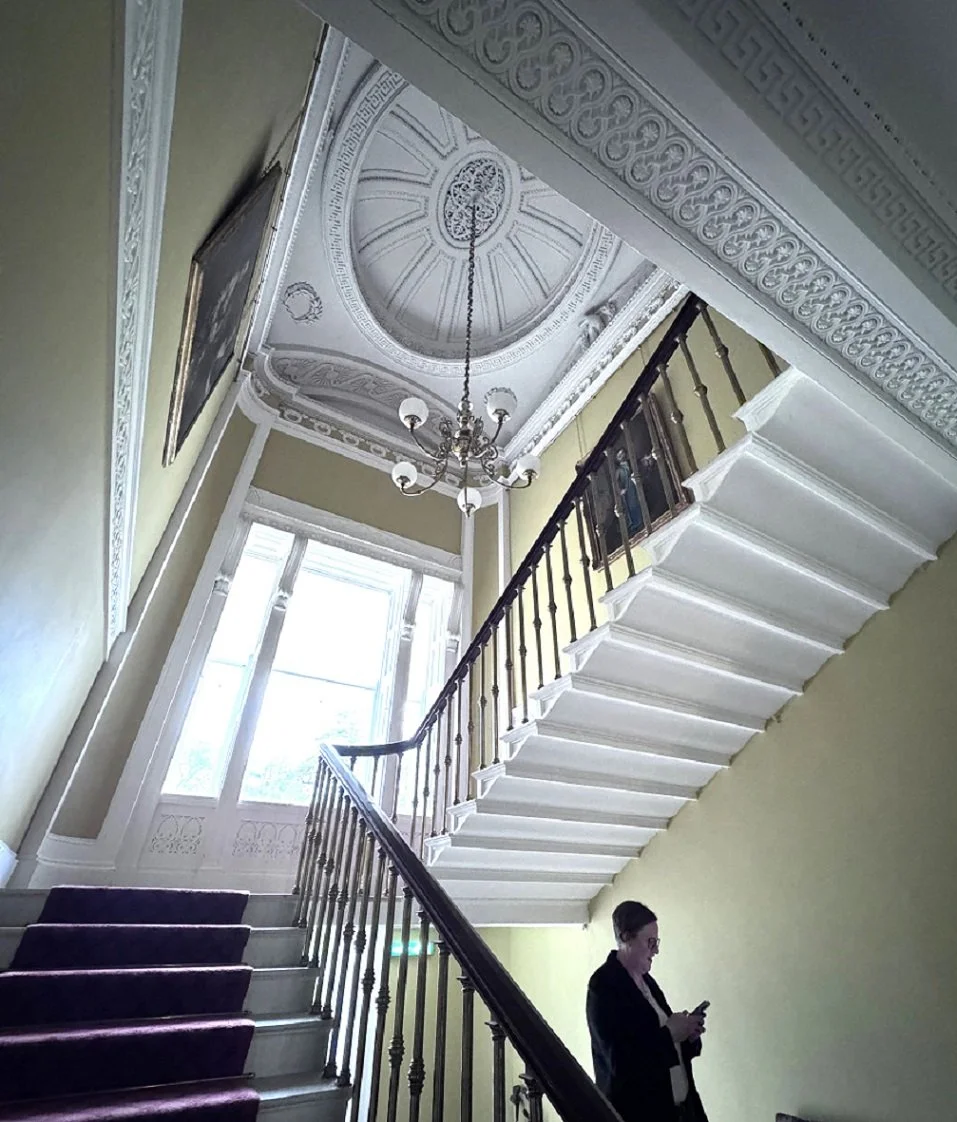
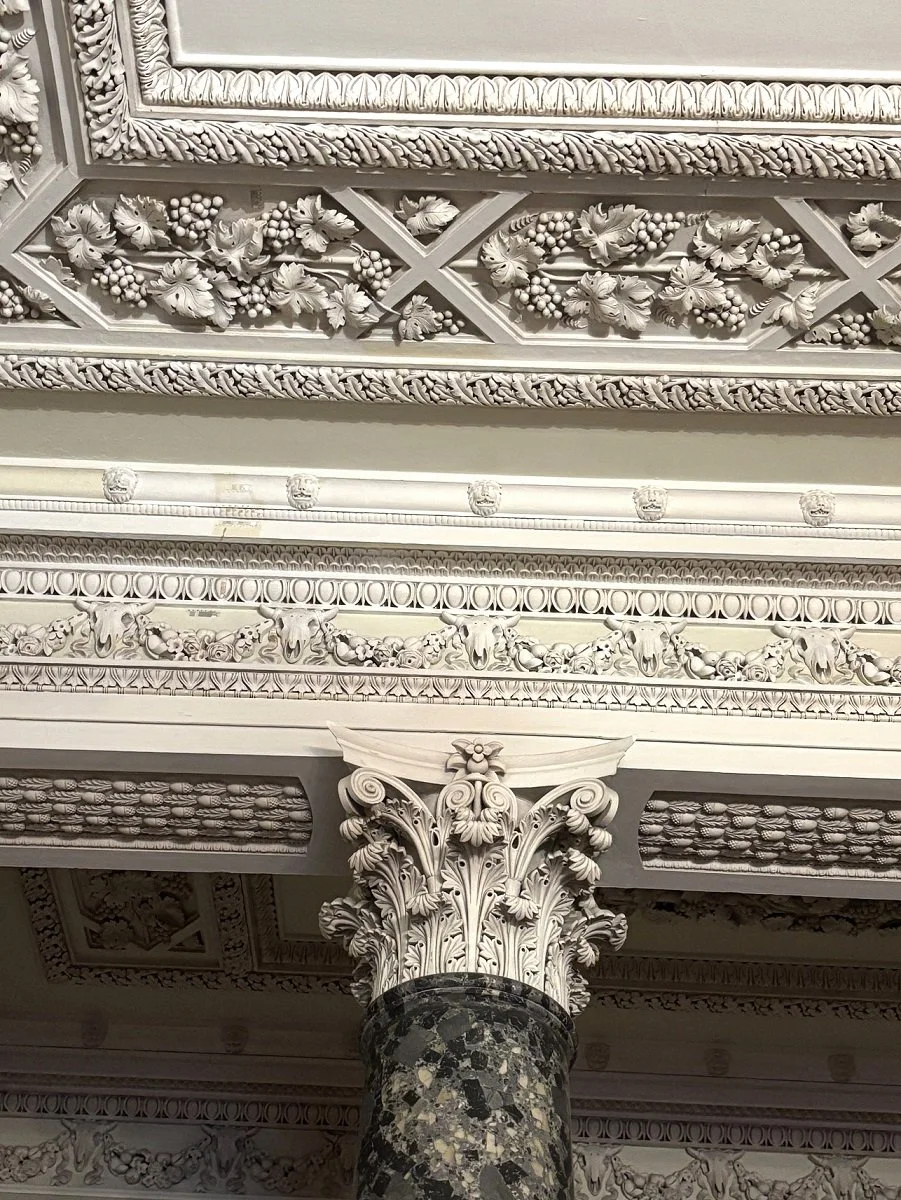





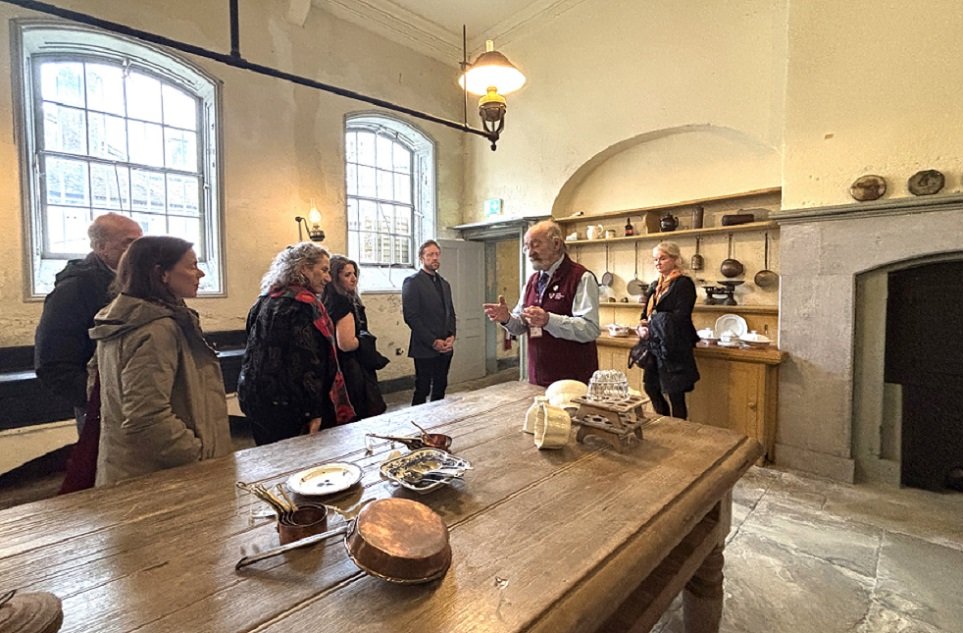
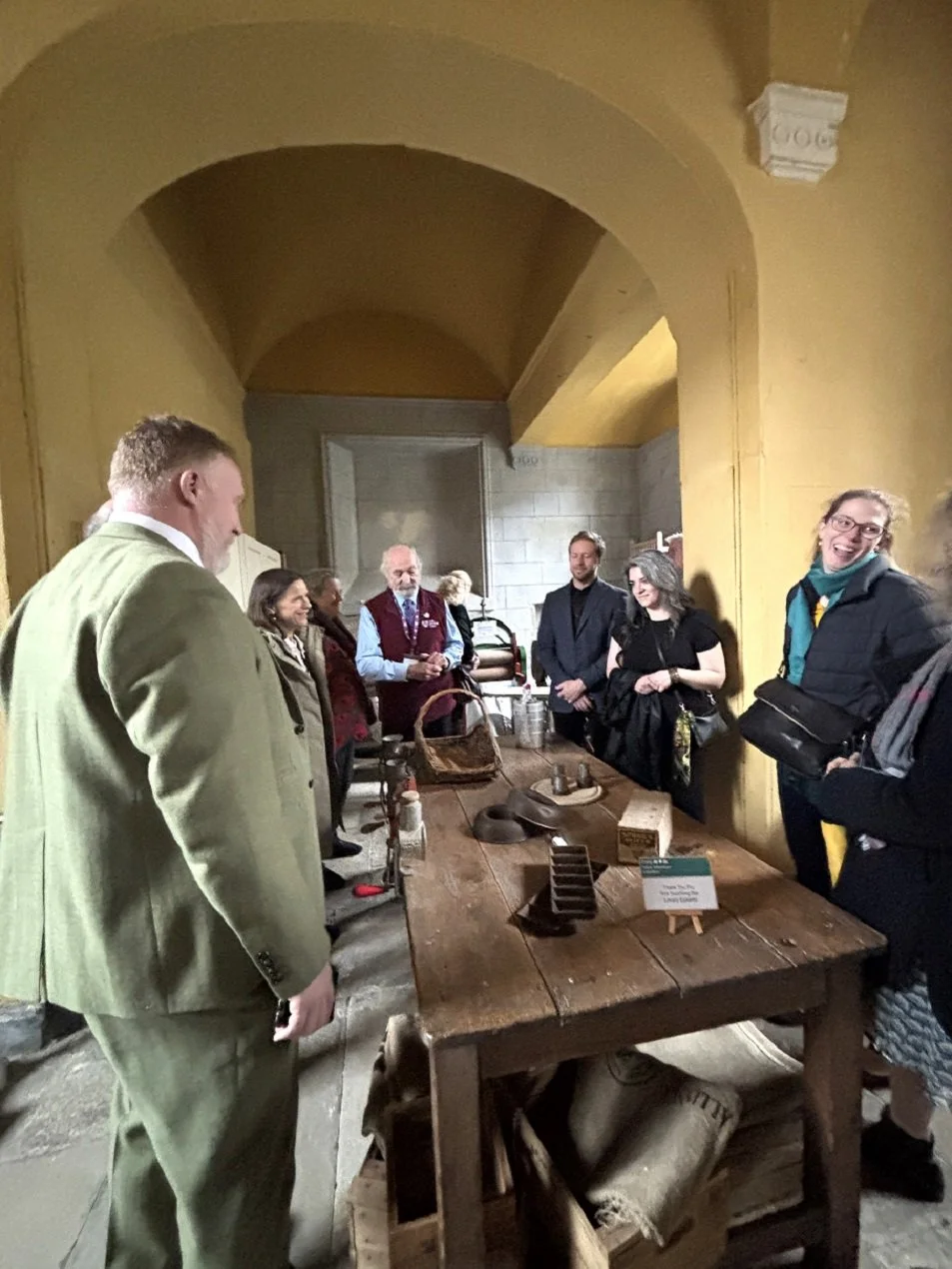
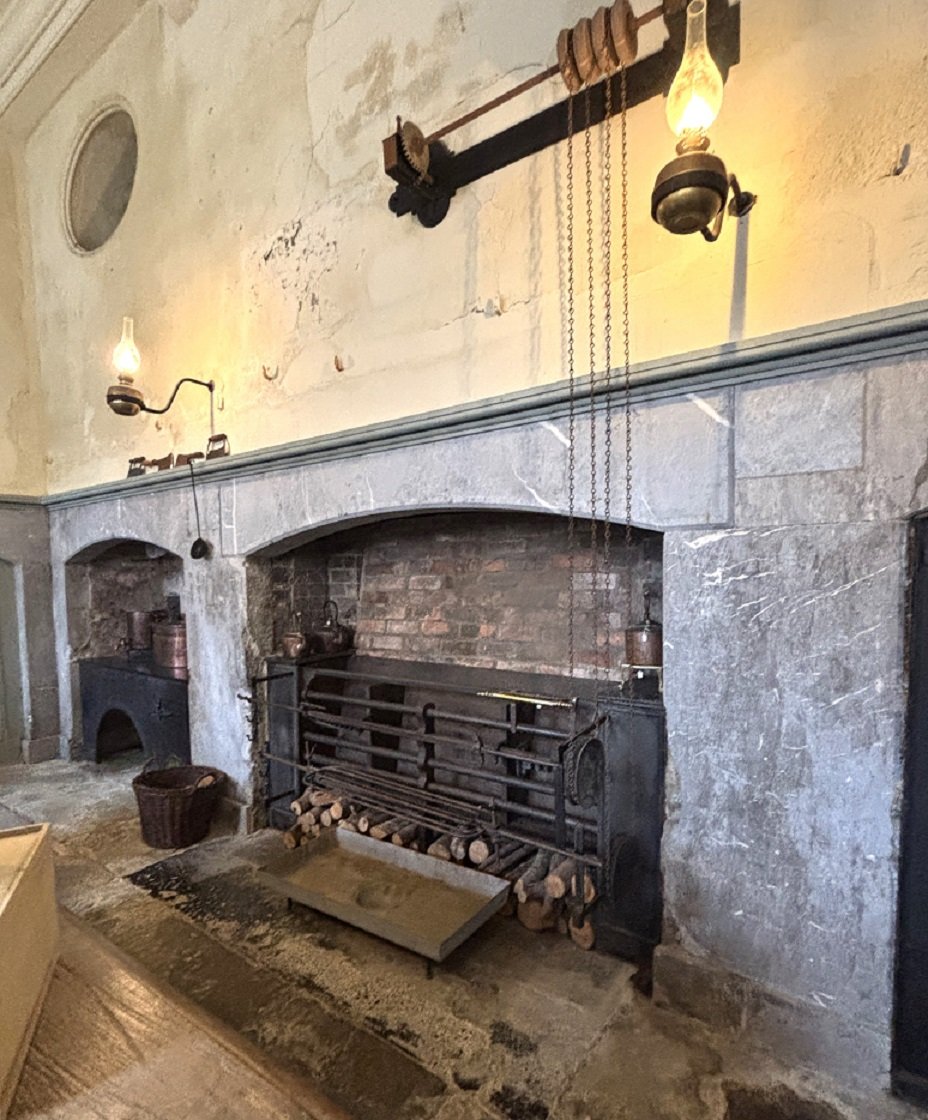
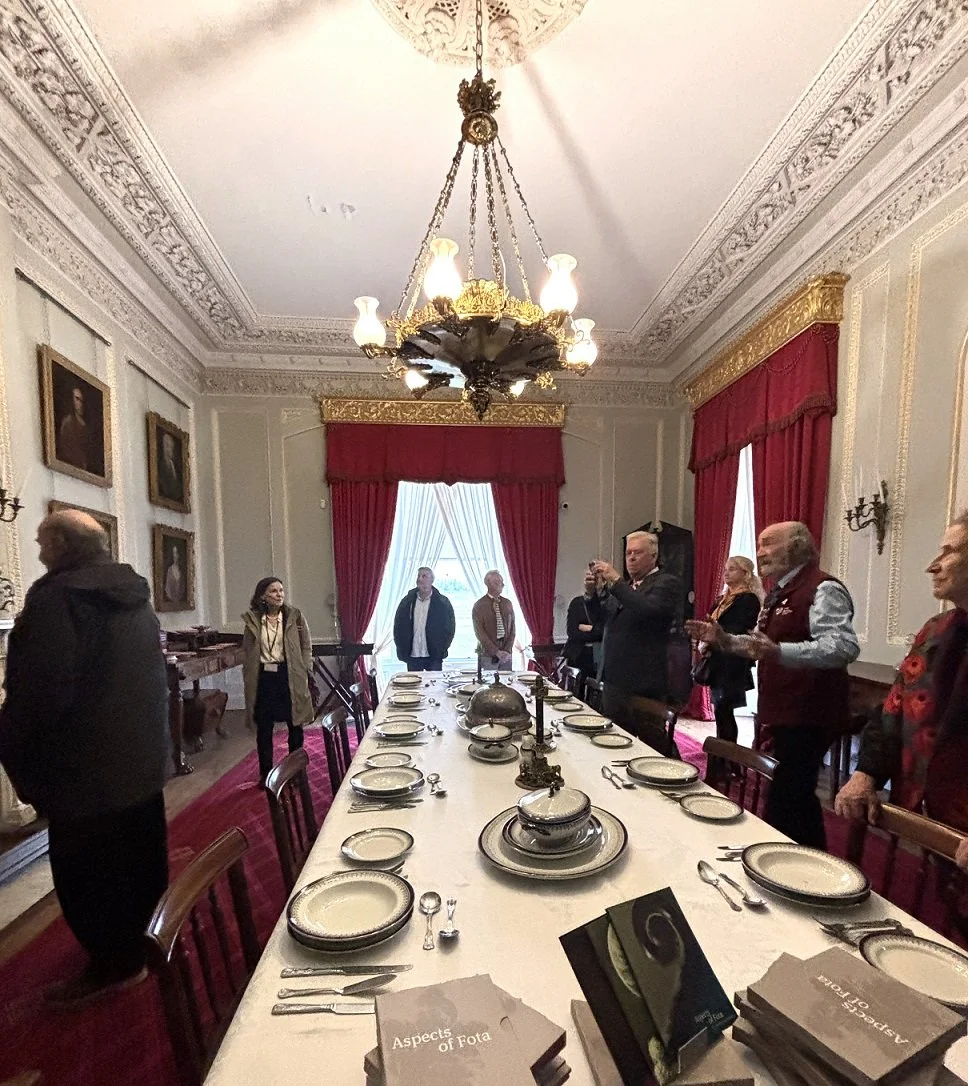





Written by L D King, AIA (with assistance from E Fitzpatrick, AIA and H Giblin Int’l Assoc AIA)
On behalf of AIA Continental Europe and AIA United Kingdom
AIA Continental Europe & AIA United Kingdom Conference / Cork, Ireland – ‘Genius Loci’ – Part I
The River Lee – flowing on both sides of the city - is the essential ingredient of Cork placemaking. Photo Credit: G Meagher AIA
In respect for those whose Latin is a bit rusty, a quick explanation of ‘genius loci’ is in order. According to Wikipedia, in classical Rome a genius loci was a ‘protective spirit or deity who presided over a place’. In modern times, the term has simply come to mean a location’s ‘sense of space’ and ‘distinctive atmosphere’ .
However, the Oxford Dictionary enhances this simple definition, noting that ‘every place has its own unique qualities, not only in terms of its physical makeup, but of how it is perceived’. It then follows with a poignant warning apropos to architects that ‘it ought to be (but far too often is not) the responsibility of the architect or landscape-designer to be sensitive to those unique qualities, to enhance them rather than to destroy them’.
Whereas all Continental Europe’s conferences – in a series that has ranged across the continent for 30 years – stressed each destination’s distinctive atmosphere, the Cork Conference heeded the Oxford Dictionary warning with particular emphasis and focused its programme with special sensitivity to Cork’s unique qualities.
In doing so, it showcased a remarkable section of acclaimed Irish architects and their works – JCA Architects, Grafton Architects, O’Donnell + Tuomey, Bucholz McEvoy Architects, de Blacam and Meagher Architects and Scott Tallon Walker.
Day 1: Cork – Past Present and Future
The Conference’s opening day welcomed the attendees with an overview of Cork and insights into its persona. Crucially, Cork lies at the very edge of Europe’s continental shelf – as far east as one can go and still be part of European civilisation. Its small scale, lack of an intensive built-up city centre and deceptive sense of isolation from the rest of Europe seemingly belie its current status as Ireland’s second city.
However, by the first few talks, the Conference speakers - by analysing new building projects, touring its cultural attractions, referencing its high tech industries and highlighting its plans to deal with current rapid growth and expansion - quickly showcased Cork at the centre stage of modern Ireland.
Dr Jason O’Shaughnessy, Interim Director, of the Cork Centre for Architecture Education
Dr Jason O’Shaughnessy introduced the attendees to the recently finished Cork Centre for Architecture Education (CCAE), the Conference’s main base for the three day weekend. CCAE is a joint school of architecture within University College Cork and Munster Technology University, offering undergraduate and postgraduate courses.
O’Shaughnessy outlined how the JCA architects developed a brief for the Centre that encouraged interaction and observation between studios. See more about the CCAE HERE.
Chinwe Kane, RIAI Southern Region Representative and Director at Scott Tallon Walker
Chinwe Kane - who considers herself Nigerian Irish - spoke of her first impressions of Cork. She trained in the UK, moved to Ireland and has worked with Scott Tallon Walker for the past 18 years, currently on the design of the Irish embassy in Abuja, Nigeria. Kane is the Southern Representative of the Royal Institute of the Architects of Ireland (RIAI), attendingRIAI council meetings and organising local RIAI events. Read more about RIAI HERE
Cathal O’Boyle, City Architect for Cork
Cathal O’Boyle addressed the all-important topic of all CE Conferences - ‘where has the city come from and where is it going’. He introduced the all-consuming topic of ‘corkness’, relating to Cork’s ‘ marshy history’ and its aspiration to become a world class city again.
Cork started as a monastic settlement on an island surrounded by two branches of the River Lee in the 6th century and was expanded and walled by the Vikings in the 9th. The two branches meet at the island’s eastern tip, where the quays and docks that border the river’s edge lead to Cork Harbour, the 2nd largest natural harbour in the world. Its Viking past, watery setting and the superb harbour established Cork as a consummate trading city. Read more about Cork’ origins HERE.
Dr Karen Lysaght, Advisor to Cork City Council
Karen O’Mahony, Senior Executive Planner and Urban Design for Cork City Council
Simon Lyons, Development Manager for Cork Docklands Development Programme
Cork is a UNESCO Learning City that ‘effectively mobilises its resources across all sectors to maximise the opportunities for lifelong learning for all its citizens'. The Cork Docklands Project at 147 ha is the largest regeneration project in Ireland, and the three speakers emphasised the attention the various city planners and consultants placed on collaboration and on keeping with genius loci dictates. Research into the historic city and its relationship to the river was likened to ‘unpeeling the layers of an onion’.
The tip of the island city – the original Cork Harbour – is on the far left of the Plan.
The speakers compared the Docklands project to the early establishment of Cork’s island centre and stressed the importance of reconnecting to Cork’s maritime heritage; ‘Cork is a city IN the river, not ON the river’. Like the original city, Docklands will rely on reclaimed, or so-called ‘made’ land, but will also look at conserving existing structures that define the permanence of the location. Read about the Docklands HERE and HERE.
As an engineer, Simon Lyons, took a ‘drainage’ approach to describe the project. His modern planning decisions build upon earlier experience in respect to the river edge conditions, roads, walkways and flood protection. The city’s implementation today is practical with the historical remains continuing as key design drivers.
Gareth O’Callaghan, Director Conservation, JCA Architects
The Conference base at CCAE was an integral part of JCA’s renovation and regeneration of the former, 18th century South Presentation Convent and School, now known as Nano Nagle Place. Therefore, a talk followed by a leisurely site visit to see the heritage gardens, museum and convent buildings in their serene, semi-rural compound in the heart of Cork was a Conference given.
The Venerable Nano Nagle was a tireless pioneer of education and social justice who founded the convent and educational mission in the 1750s and established her own order of nuns, the‘Institute of Charitable Instruction of the Sacred Heart of Jesus’ in 1775. The fullness of her exceptional story and that of the revitalised site can be found HERE.
Photo Credit: G Meagher AIA
Photo Credit: M Lischer FAIA




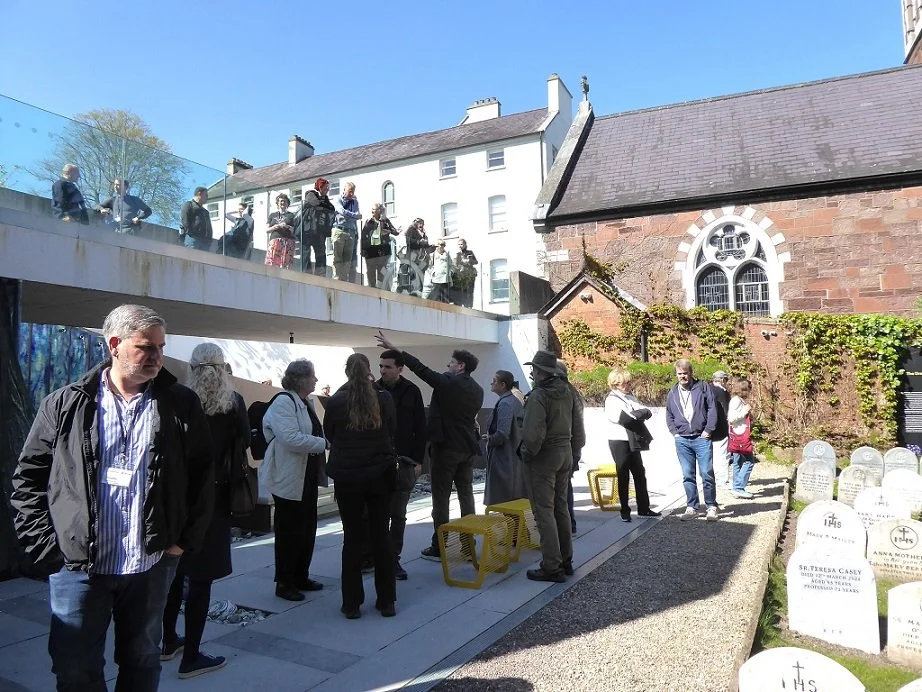


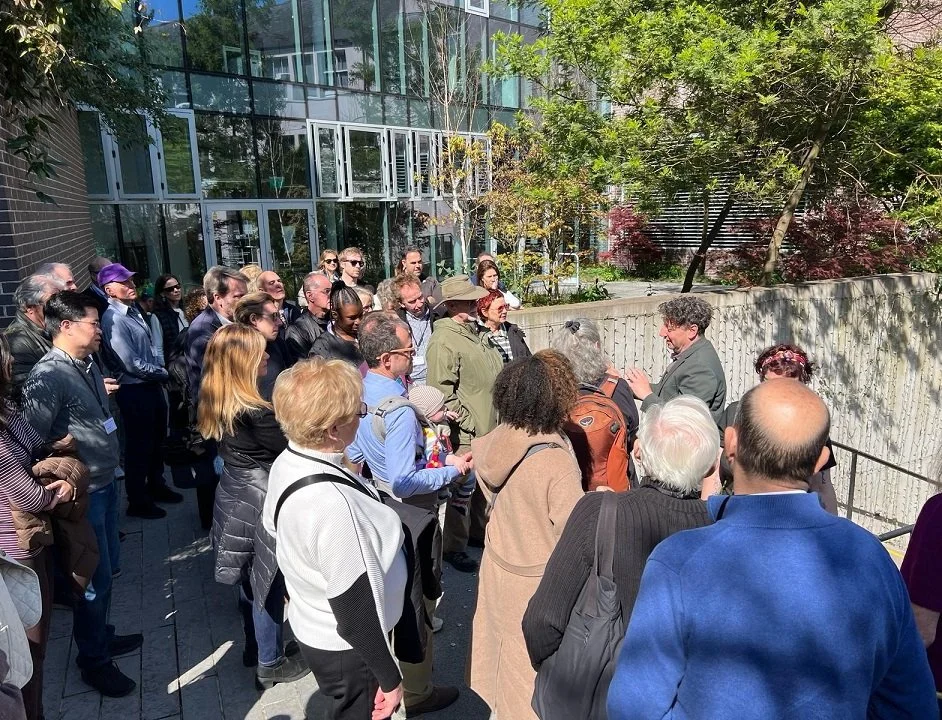


Yvonne Farrell, Founding Director, and Gerard Carty, Director, Grafton Architects
Grafton Architects’ talk entitled ‘The City as Participant’ divided into two sections. In the first, Yvonne Farrell touched on seven cities where Grafton has worked and emphasised that ‘wherever one builds on this earth, each part of the globe has a different condition and the city itself - its tradition, its atmosphere, its people - is a participant in the work of an architect’.
Farrell’s talk continued celebration of a city’s genius loci, or in her own terminology, a city’s ‘unique DNA’. She used original sketches, or ‘drawings from the imagination’, to chart how light’s progress – the daily cycle of light passing through – gives each place on earth its own unique identity. Read more about the architects HERE.
Farrell’s truly inspirational talk stressed that ‘a sense of belonging is one of humanity’s basic needs’ and asked the simple but relevant question, ‘do we spend enough time walking through a city’?
In the second part of the Grafton talk, Gerard Carty’s excellent talk focused on the complexity of the comprehensive redevelopment of Cork’s beloved Crawford Art Gallery, housed within an 18th century Custom House with 19th century and modern extension and containing over 3,500 national collection artworks. Grafton’s design respected the layers of history while improving wayfinding and creating people oriented ‘contemplation’ spaces – such as a roof top viewing gallery offering panoramic views of the city - that will enhance the public’s involvement.
The Director of the Gallery, Mary McCarthy, who had joined the Conference for the talk, admitted that – while disappointed on behalf of the attendees who were now eager to view the Galley but were unable to due to ongoing construction works - her concern was tempered by Cork’s joy and relief that construction has finally begun. Read more about the redevelopment of the Gallery HERE.
Heinrick Wolterstorff, O’Donnell + Tuomey
Farrell’s walk-through-the-city question proved relevant to Heinrick Wolterstorff’s subsequent talk on St Angela’s College, a girls only secondary school. The College is a complicated campus of stepped building blocks and courtyards built around a core of original 19th century school buildings. Given its multiple levels and interconnections, it could not be fully understood through pictures; it had to be experienced firsthand. Fortunately, the campus was fully accessible and the attendees were able to walk to it and through it.
To reach the School, the attendees crossed the southern branch of the River Lee, then meandered through the retail centre of Cork under the tutelage of city guides full of Irish anecdotes. They passed the closed Crawford Gallery and the northern branch of the River Lee before tackling St Patrick’s Hill – a notorious steep hill that Lance Armstrong was rumoured to have walked up rather than ride his bike. The Irish school girls who daily attend the school are, however, made of sterner stuff.



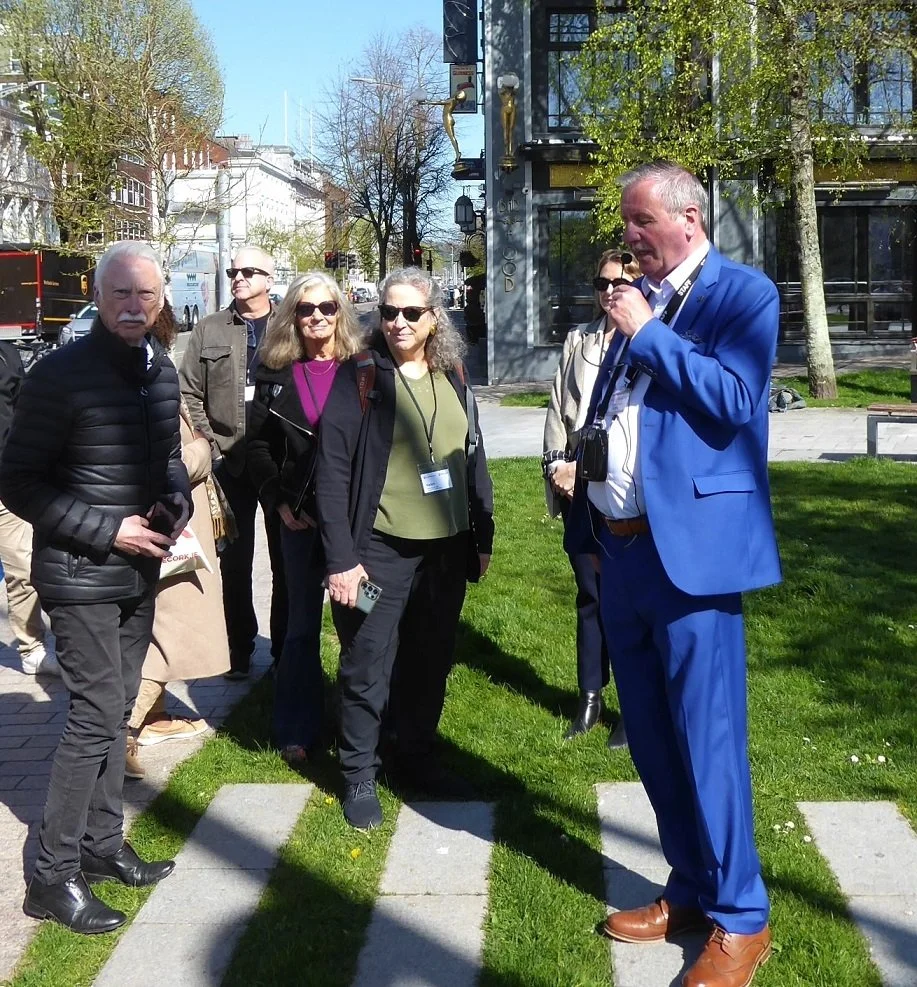




Photo Credits: H Chong









DRINKS RECEPTION
The long day ended with a welcome, relaxed drinks reception at the bar at The Dean Cork, one of the early interventions in the old Port area, prior to the Cork Docklands development farther east. Read more about the area HERE.
Written by L D King, AIA (with assistance from E Fitzpatrick, AIA and H Giblin Int’l Assoc AIA)
On behalf of AIA Continental Europe and AIA United Kingdom
AIA Continental Europe Conference / Sofia, Bulgaria – Ancient Places in a Modern World
View from the Conference hotel of government buildings with the Alexander Nevsky Cathedral in the distance and a yellow brick boulevard in the foreground.
There must be some architects who prefer not to travel, who relish their home grown attractions, and perhaps - as all architects aspire to do - even add to them. But there is also another group of architects that delights in exploring unfamiliar places, venturing outside comfort zones, trekking across the world, seeking new experiences. Some of these architects no doubt thoroughly research their destinations prior to arrival so they can quickly comprehend it.
However, this article is dedicated to an even more select group of intrepid, trekker architects - those AIA members who love to explore, but who arrive at a new destination without even the faintest idea of what they are about to experience.
Sixty or so such architects took it in good faith to visit Bulgaria for the 2024 October AIA Continental Europe Conference. Many of them registered on the understanding that they would be served a programme of iconic buildings, dramatic landscapes, generous food and even better camaraderie - all organised by others for their effortless consumption.
Fortunately, the conference organisers were up to the task. Any AIA conference organisation is not at all easy, but it helps satisfy the vague expectations of the unprepared when the destination is one of Europe’s ‘best kept secrets’. Perhaps WHY Bulgaria has remained a secret can be found in its complex and difficult history.
The span of Sofia’s history is manifest in the range of its architectural styles. A 4th century church cohabits with the early 20th century mineral baths (now a museum).
Ancient drinking fountains supply the Sofia inhabitants with mineral water, while monuments to 19th century revolutionary heroes overlook busy squares.
Bulgaria’s history began with the Thracians, then moved on to the Romans and Byzantines. After a period of Bulgarian wealth as a strong European power during intervals in the 8th to 10th and the 12th to 13th centuries, it was subjected to Ottoman rule starting in the late 1300s. The country achieved limited autonomy in the mid-1800s, but then local and world wars brought another period of decline and chaos. After being on the losing side in both WWI and II, it fell into the Soviet sphere until the 1990s. Bulgaria finally became a member of the European Union in 2007.
However, to understand Bulgaria’s cultural identity - and the otherwise seemingly long ‘gap’ in its architectural legacy from Byzantine/ Early Medieval to Baroque - one disastrous historical period must be more fully acknowledged. Through neglect and isolation under 500 years of Ottoman rule, a once great medieval power missed the Renaissance, the Great Ages of Exploration and Scientific Discovery, the Enlightenment and the Industrial Revolution. Meanwhile, its population sheltered away in small, difficult to access towns and mountain villages.
For those who are serious about history and even more serious about a more detailed history, please check out as a bare minimum Wikipedia HERE. There is no shame in researching a destination’s history after one’s departure.
Thursday Bulgaria is now determined to regain its place in the modern world and enthusiastically welcomed the AIA CE Conference at an evening reception – with local musicians (all music credits can be found at the end of the article) – held in the Bulgarian Union of Architects.
The US Embassy Cultural Attaché, Eric Brassil and the CEO of ‘Foundation America for Bulgaria’, Nancy Schiller, both greeted the attendees. Local dignitaries making presentations included the President of the Bulgarian Institute of Architects, Arch. Petar Dikov, and the former Minister of Regional Planning, Arch. Belin Mollov. Elizabeth Chu Richter, FAIA, the 2015 AIA National President, was a surprise guest at the event.
An unprecedented letter written on behalf of the President of Bulgaria, Rumen Radev, and read out at the reception, underlined the national importance given to architectural recognition: ‘I am confident that this conference will make Bulgaria better known in the world’.
Event organiser, Rada Doytcheva, FAIA, prepared an overview presentation entitled ‘The Stepping Stones of Culture in Bulgaria’. Its graphic timeline established Bulgaria’s cultural heritage in relation to Western Europe and Mediterranean cultural development and introduced the conference theme – ‘Ancient Places in a Modern World.’
From an image loving architect’s perspective, ‘Stepping Stones’ puts Wikipedia’s history in its place. See HERE.
Event organiser, Rada Doytcheva, FAIA; and guests, Arch. Petar Dikov, President of the Bulgarian Institute of Architects (SAB); Elizabeth Chu Richter, FAIA, 2015 AIA National President; and Eric Brassil, Cultural Attache US Embassy in Bulgaria, greet the audience.
Sitting with the AIA CE audience, other dignitaries, Nancy Schiller, CEO Foundation America for Bulgaria, sponsor for the Plovdiv event (front) and Zdravko Petrov, Founder Historic Routes (2nd Row), await their speaking slots.
Friday A morning walking tour of downtown Sofia began along delightful and unexpected yellow brick boulevards and featured Baroque mansions, early Christian and Russian churches, a renovated market (with unexpected entertainment from a world famous choir) plus the great cathedral of Alexander Nevsky. Keeping its most ancient places alive, Roman ruins have been integrated into the modern city.
Ruins from the ancient Roman city of Serdica – next to Baroque buildings and distant mosques - are preserved within the modern city.
The afternoon then included a series of presentations on Sofia’s history and growth by local architects and town planners. Speakers included: Prof. Dr. Arch. Todor Krestev, UNESCO Expert; Arch. Dessi Dimitrova, President Delinear; Dr. Arch. Maria Davcheva, Editor Architectura Magazine. The later dinner was accompanied by a renowned harpist.



























Saturday The group left Sofia early for a bus ride to Plovdiv, Bulgaria’s second largest city and the oldest city in Europe still functioning. The visit was in three parts: a tour of the old hill town, a stopover at Plovdiv’s Roman amphitheatre and a visit to ancient mosaics preserved in a modern museum, the Bishop’s Basilica.
Lectures on the challenges of historic preservation within a modern city – along with a reception and operatic entertainment by State Opera Plovdiv Soloists – were sponsored by Nancy Schiller, who has supported the Basilica from its inception. The first speaker, Prof. Dr. Elena Kantareva, a world renown scholar and restaurateur, has been credited with spearheading the preservation initiative.
Other speakers included: Arch. Krassimir Todorov and Arch. Mariana Krachanova, designers of the Bishop’s Basilica museum; Arch. Ilko Nikolov, President Plovdiv SAB Chapter; Dr. Arch. Velina Pandjarova, UACEG Chair Theory and History of Architecture.
It is said that Plovdiv - originally named Philippopolis - rivalled Rome with its seven surrounding hills and its dramatic amphitheatre. Today, it is a UNESCO heritage city.
Old Plovdiv offered steep, cobbled streets and decorative wood houses, while in the modern city centre,
the new Bishop’s Basilica museum has been built to protect and display the early Christian structure and its extensive mosaics.
AIA CE traditionally holds a Gala Dinner on Saturday night. Not only were the guests regaled with a violin and harp duet, the event organisers were celebrated and the winners of CE’s rejuvenated Design Awards were also announced.












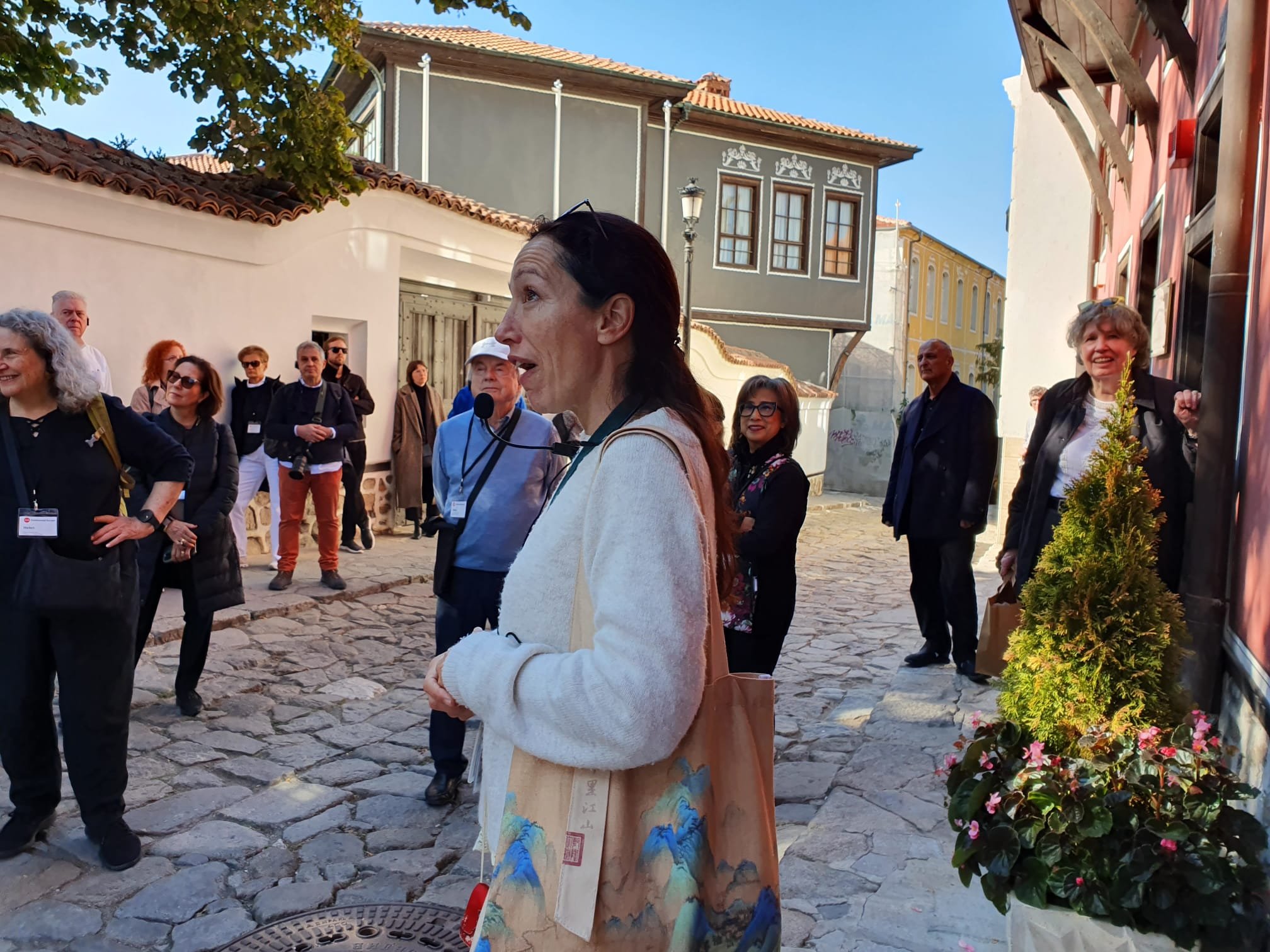







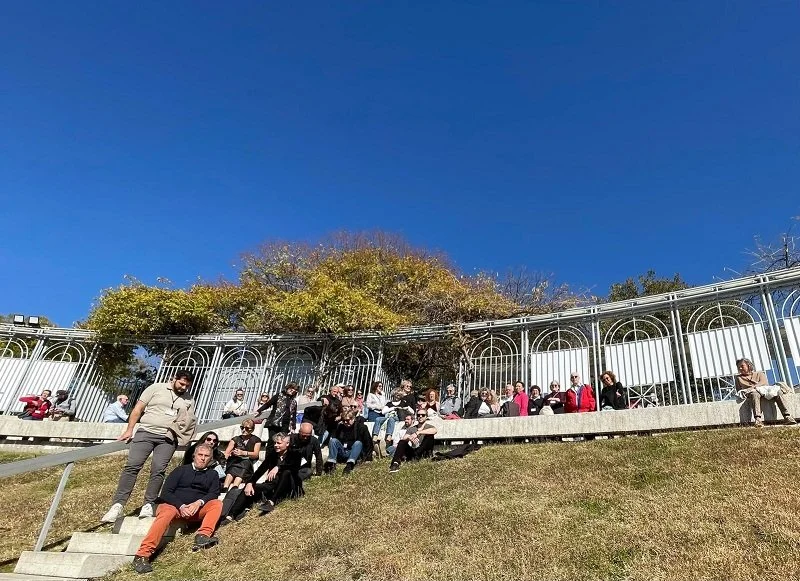






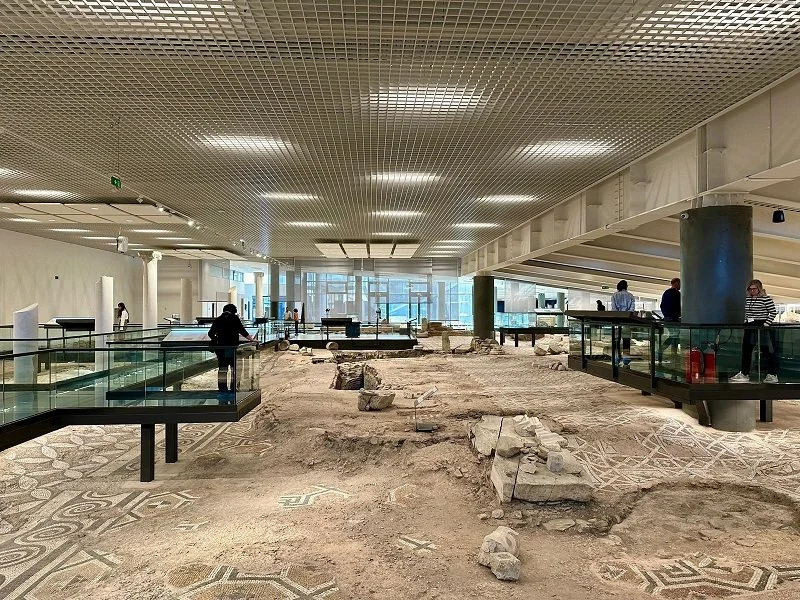
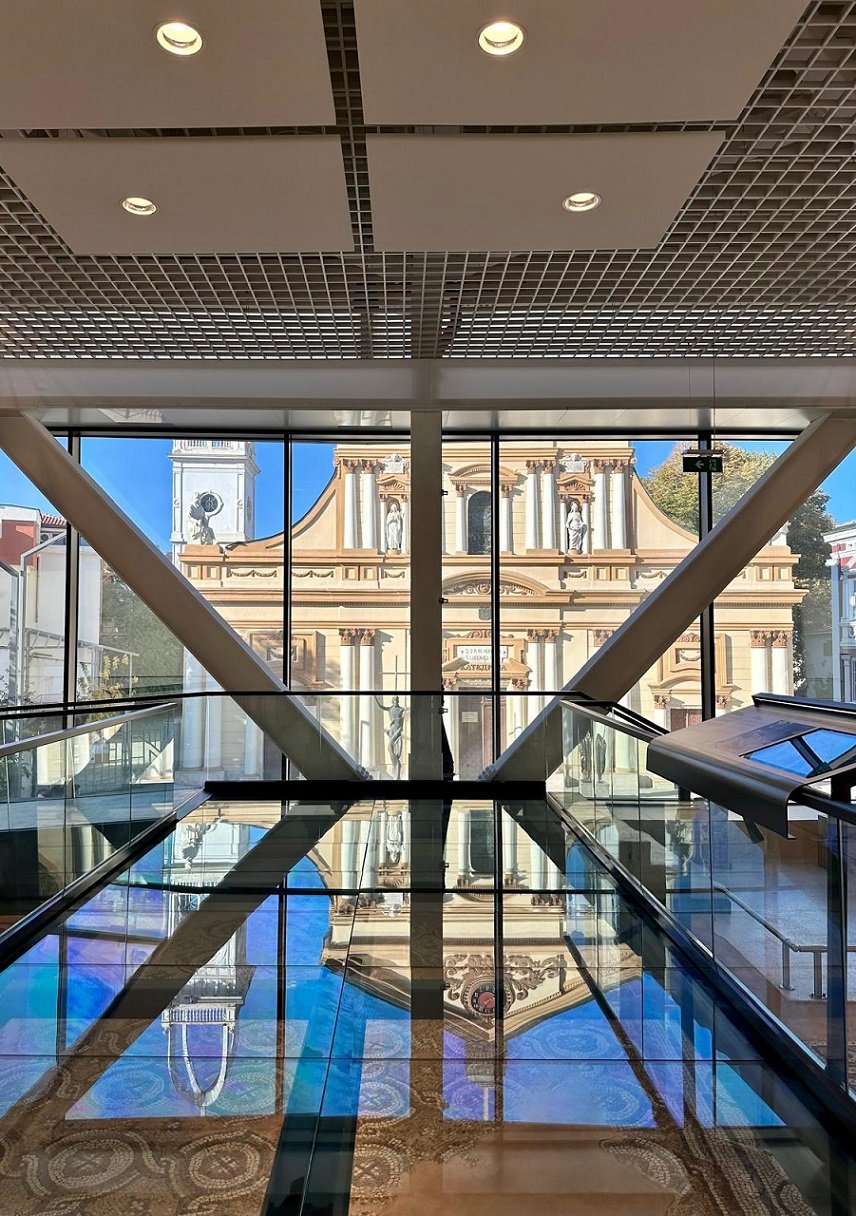

Sunday AIA Architects were given a hint on what to expect at the Rila Monastery – another UNESCO site, several miles from Sofia - through conference literature. However, the attendees were unprepared for the full drama of the site once they walked through the entrance arch. Their awe generated the best photography of the conference as shown in the slideshow below.
After a lengthy stay at the monastery, the return trip to Sofia included a stop at the Natural History Museum, housed in a Soviet era government building. The historical collections were fascinating, while the unusual building became another unexpected treat.
Through the arch Into a dramatic world of stripes, colour and mountain vistas.
The Soviet grandeur in the former Parliament defied categorisation, and almost overwhelmed the History Museum’s treasures.
















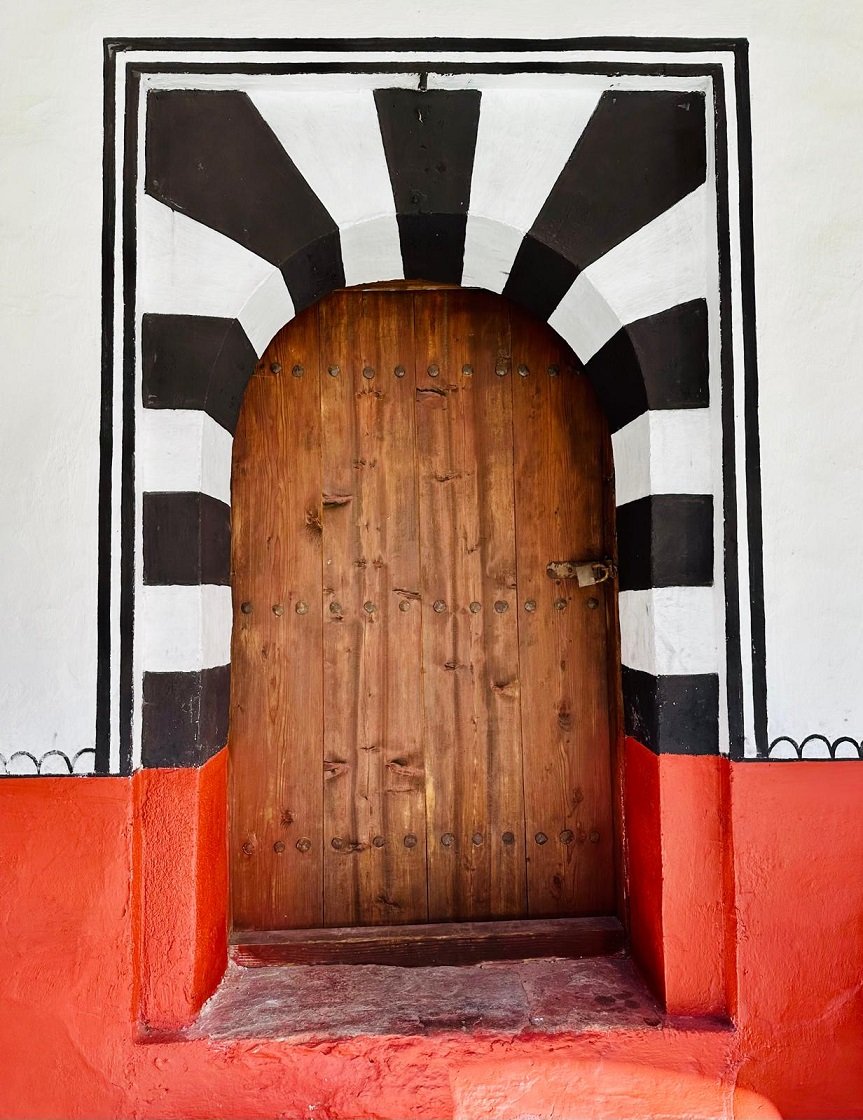
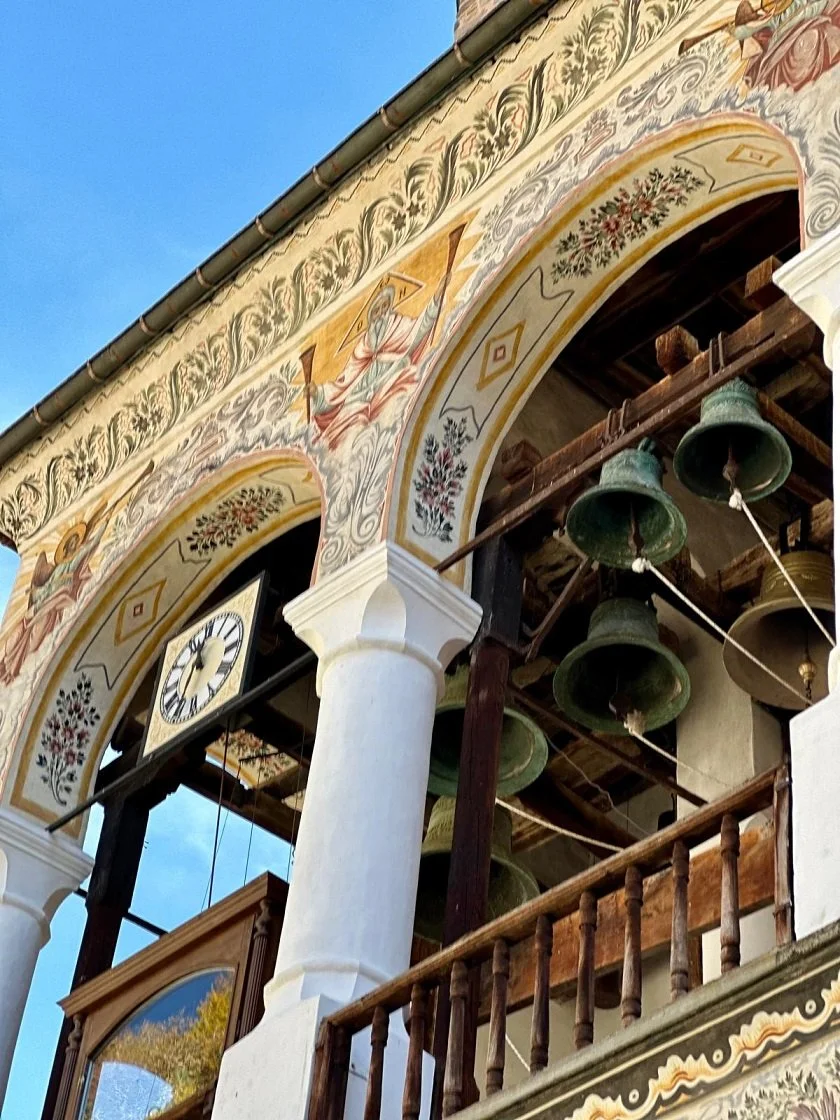
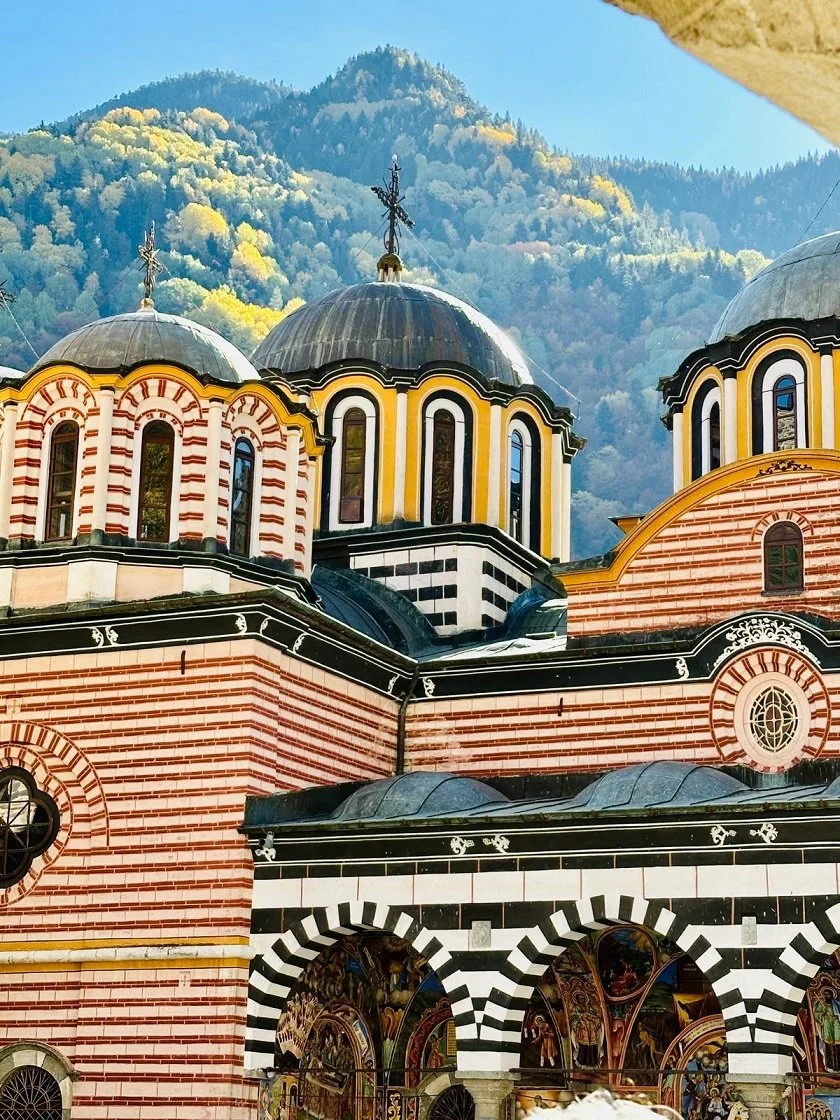
Monday Extension Day For those who wanted more – and there was a full busload who did – the extra Extension Day took a long trip north towards the Romanian border to Veliko Turnovo, the ancient capital of Bulgaria in the days of its pre-Ottoman prime. It is still a major city with a dramatic setting – the city of a thousand windows and the one Tzarevetz fortress.
Multiple viewpoints generously inserted in the townscape by the local city planners expose dramatic vistas of Veliko Turnovo, built around sharp river bends.
A wine tasting lunch with the mayor and a series of lectures and discussions led by local architects ended the day and the conference. Speakers included: Dipl. Ing. Nikolay Nikolov; Dr. Arch. Petar Nikolov; Arch. Stefan Conev, President of SAB chapter; Arch. Radomir Dankov.




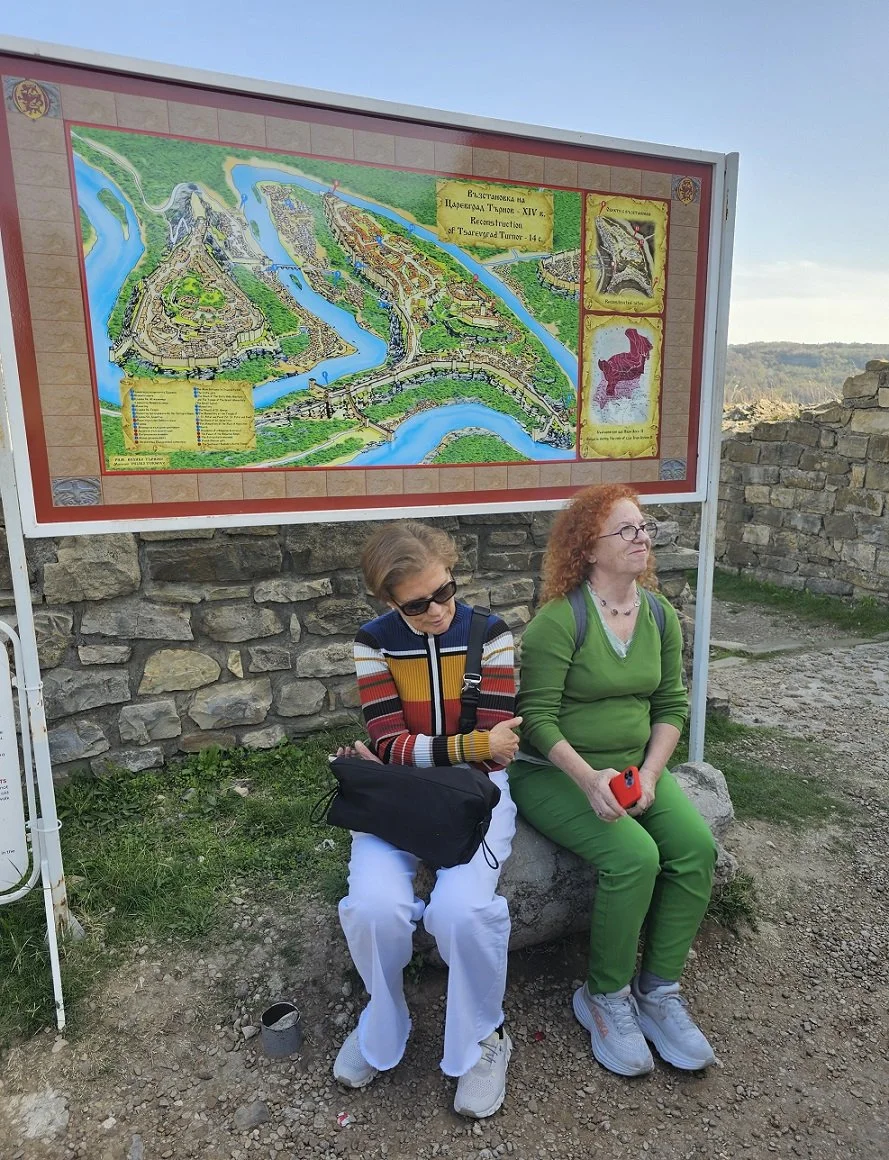










The event organiser, Rada Doytcheva, FAIA,celebrated her birthday immediately after the conference. The birthday card by attendee, Dominique Tomasov AIA, from Barcelona, expressed the sentiments of all.
The Sofia Conference Programme is included HERE. Additional information - including Presenter Notes - on the Bulgaria event and also on past and future AIA CE conferences can be found on the AIA CE website HERE and HERE. These international conferences are a bargain and the Continuing Education Credits are significant.
The 2025 AIA CE April Conference in Cork, Ireland, will be co-hosted by AIA CE and AIA UK – a welcome joint effort.
Written by L D King, AIA
On behalf of AIA Continental Europe and AIA United Kingdom
FURTHER CREDITS:
Event Organisation Team: Rada Doytcheva FAIA, Conference Chair; Sasha Doytcheva, Architecture MA student RCA London; Jina Son, Humna Farid and Michael Ocejo, RADA Architects (www.rada-arch.com); Ray Spano, AIA, AIA CE France Director; Irene Reidy, AIA CE Administrator; Eli Hantova, SAB Union of Architects of Bulgaria (https://bularch.eu/); Desi Dimitrova, Delinear (https://delinear.bg/).
Event Planner and Event Managers: Daniela Nakova, Tempora Travel (www.temporatravel.com); Manager Violeta Milusheva, Director, and Deni Peeva, Events Manager Intercontinental Hotel (www.intercontinental.com/sofia).
Special credits: Svetoslav Stankov, Consul General of the Republic of Bulgaria in Chicago (https://www.mfa.bg/en/embassies/usagc3/1930).
Photographs: All photos by Conference attendees, and also by Ivo Oreshkov (https://oreshkov.bg/).
Music: Music played a special part of the programme and the references here are included at the special request of Rada Doytcheva to encourage further familiarization with Bulgarian culture:
Day One Opening Reception
Fanny Koutzarova, Piano and Ventzislav Trifonov, Clarinet
See HERE.
Day Two Ulpia Serdika Ruins
TE DEUM ADORAMUS Women’s Chamber Ensemble
Dinner “Pri Orlite” (With the Eagles)
Angela Madjarova, Harp
Day Three Plovdiv at the Bishop’s Basilica
State Opera Plovdiv Soloists: Evgenia Ralcheva, soprano, Vera Girgonova. soprano, Victor Ibrishimov, Alper Unluturk / Liliana Barzeva (introductions)
See HERE.
At Gala Dinner at the Intercontinental
Denitza Dimitrova, Harp and Ivan Penchev, Violin
See HERE.
The Ultimate Guide to AIA24 for Students & Emerging Professionals
Colt Brock, Assoc. AIA, has written a helpful and thorough guide for young designers attending the AIA annual conference. Click the button below to learn about student tickets, recommended sessions and tips for navigating the event itself.
AIA Continental Europe March 2024 ‘Mini Conference’ / Bologna
Given the success of AIA Continental Europe’s two 2023 Conferences – Sicily in the Spring and Chinon in the Fall – it was disappointing to discover AIA CE had nothing planned for Spring 2024. It looked like waiting for the Sofia Conference in October was going to be a wearisome experience…
But AIA CE is a chapter with multiple, regional sections, and the Italian Section - with a plethora of enticing cities just awaiting a chance to show off - came to the rescue with its own ‘Mini Conference’ this March. It was only two days, promised only 10 HSW continuing education units and signed up only 25 architects, but due precisely to this smaller scale and relaxed atmosphere, it was a learning experience packed with a great deal of FUN.
Bologna was once described as the ‘City of Towers’. Alas – the towers have been falling by the wayside, and first impressions found instead that Bologna was a ‘City of Porticos’. Or should that be ‘City of Extended Porticos’, or maybe ‘City of Colonnades’, or even ‘City of Arcades’? Let us not quibble; the citizens of Bologna call them porticos without hesitation, and even UNESCO celebrates the term. They are everywhere.
Also, the citizens of Bologna being practical people without a local source of marble paved their porticos with cheap, durable terrazzo. However, for some reason no one refers to Bologna as the ‘City of Terrazzo’. Along with the porticos, terrazzo is everywhere, and the combination works exceedingly well.
To its enthusiastic visitors – including those not burdened with an architectural perspective - Bologna is unequivocally the ‘City of Food’, and the Mini Conference organisers capitalised on this; first, with a ‘Historical Walking & Food Tour’ ending in a ‘Wine & Food Tasting’ and, second, with a sponsored luncheon/lecture the next day in one of Bologna’s most popular seafood restaurants.
As excellent as the food was, the Mini Conference was not without serious content. The event organiser, Morgan Danner AIA, described her work in expeditionary construction based at the Naval Facilities Engineering Systems Command (NAFAC) in Naples.
To paraphrase her, expeditionary construction is, ‘construction that is for expeditious purposes in assisting military operations or emergency response teams in forward deployed environments; environments usually remote or austere in location, or have been disrupted by war, crises, manmade or natural disasters, or undergoing civil unrest’.
Whereas one might expect military operations to require cost effective design, superior logistics and expedited construction, Danner’s emphasis on applying the same criteria to disaster relief and emergency responses was a satisfying diversion that earned instant respect.
Other speakers included Marc Di Domenico AIA speaking on behalf of one of the event sponsors, the Institute of Design International, established by Domenico in Florence. AECOM, another event sponsor (and consultant to NAFAC), also spoke on how it approached sustainability issues in its projects.
A highlight of the weekend was a tour entitled ‘The Red City with its Porticos and Stairs’, which reached parts of the city still undiscovered by the attendees. Bologna, in addition to its towers, porticos, terrazzo and food, has been a historic ‘City of Learning’ and remains a university town complete with both modern and ancient libraries and laboratories as well as an impressive catalogue of scientific discoveries.
While the façade of Bologna’s Basilica of San Petronio in the city’s main piazza remains strangely unfinished due to city and papal rivalries dating back centuries, architects have been proposing solutions for its completion since the Middle Ages.
Their submittals are kept in a special room in the Basilica that was opened for the group’s architectural inspection. Seeing a Palladio competition drawing was an extra special treat, although his plan was too faint to capture in the photograph.
If you are not aware of AIA CE’s conferences and regional events but are looking for a user-friendly way to earn continuing education units while indulging in a European city break, look them up on AIA CE’s website HERE. These international conferences are a bargain, and AIA UK members are always welcomed.
Written by L D King, AIA
All Photos by L D King, AIA (unless noted otherwise). Late change - the original ‘Leaning Tower of Bologna’ photo now replaced with one by Royce Lanier AIA. Other Bologna tower pictures offered as replacements are included in the slide show below. Photos by Lorraine King AIA, Royce Lanier AIA, Sergio Danese AIA and Rada Doytcheva FAIA.
The 2nd and last wine / food tasting of the long weekend with lingering attendees. Photo by the waiter!






